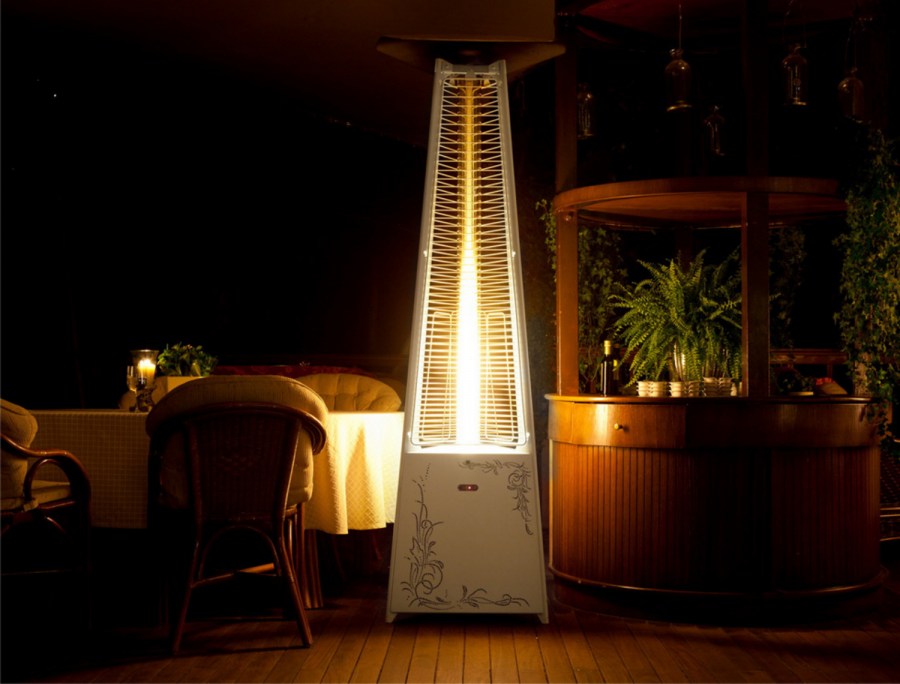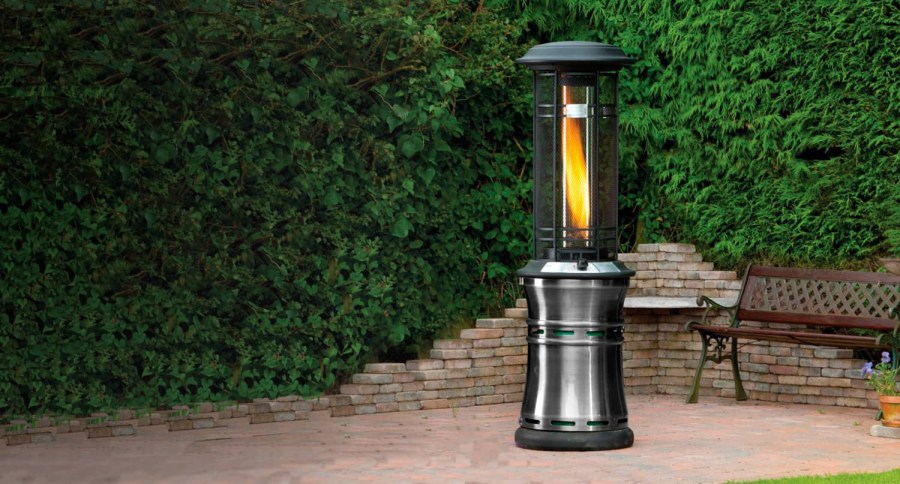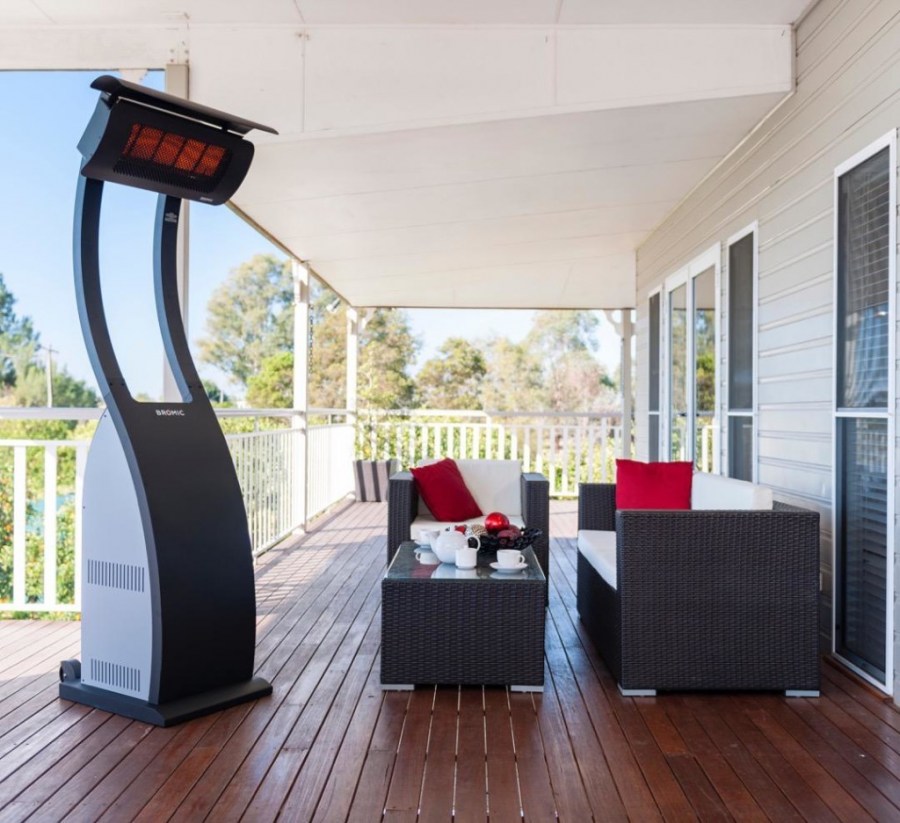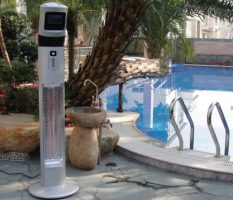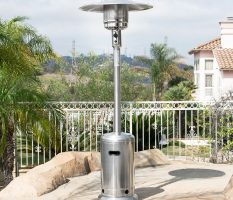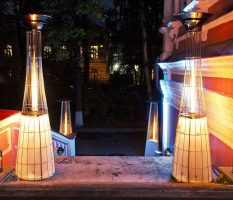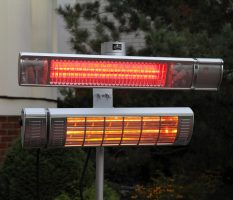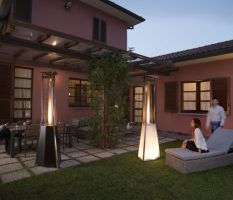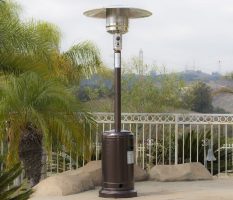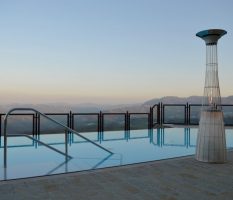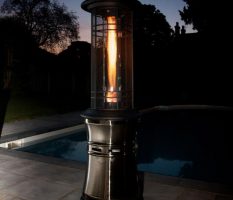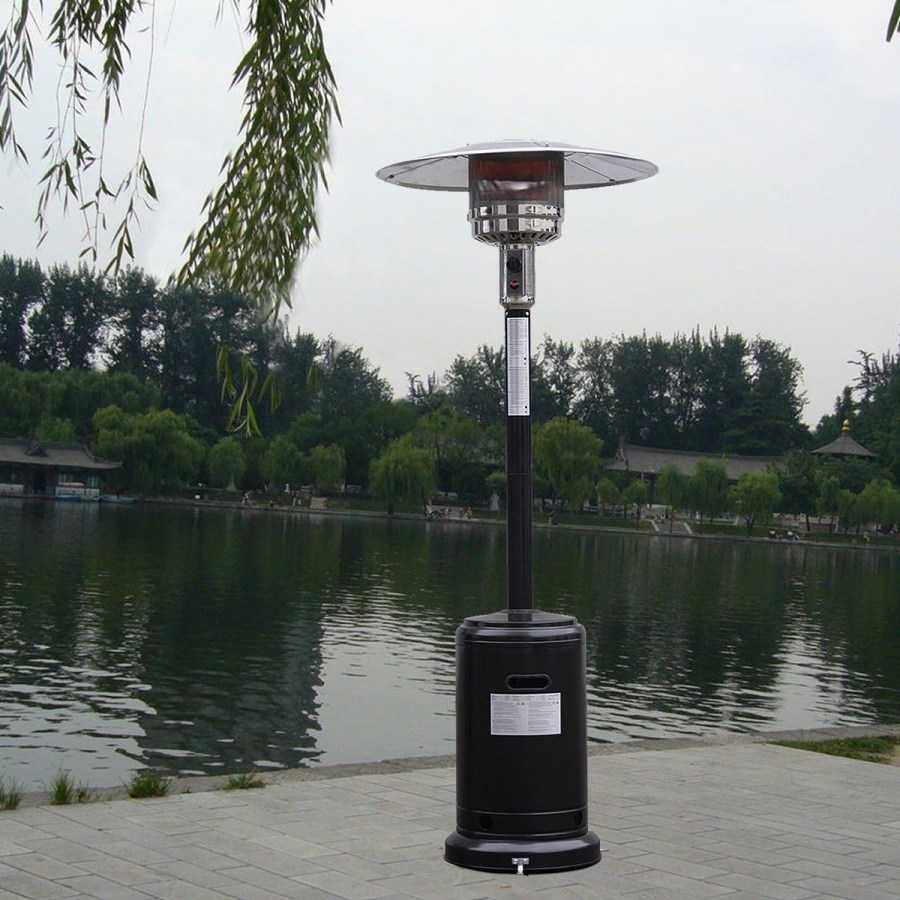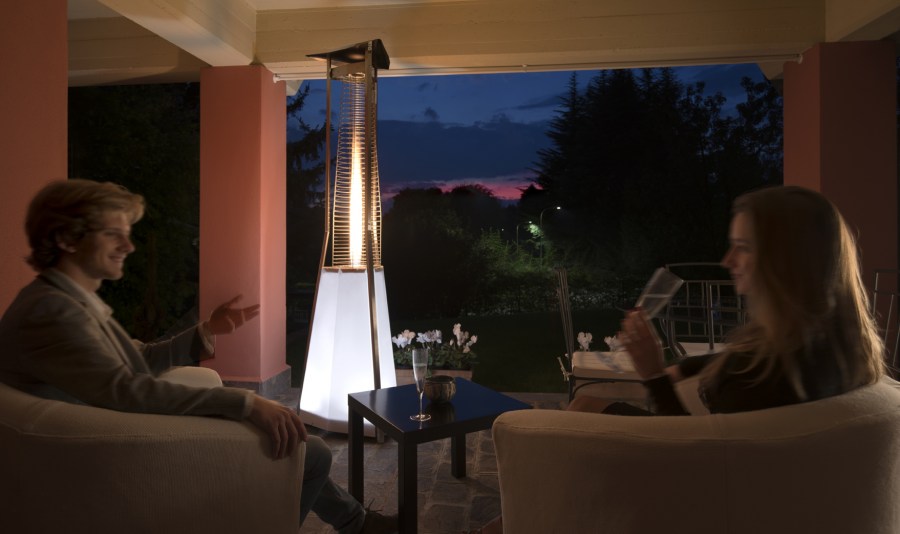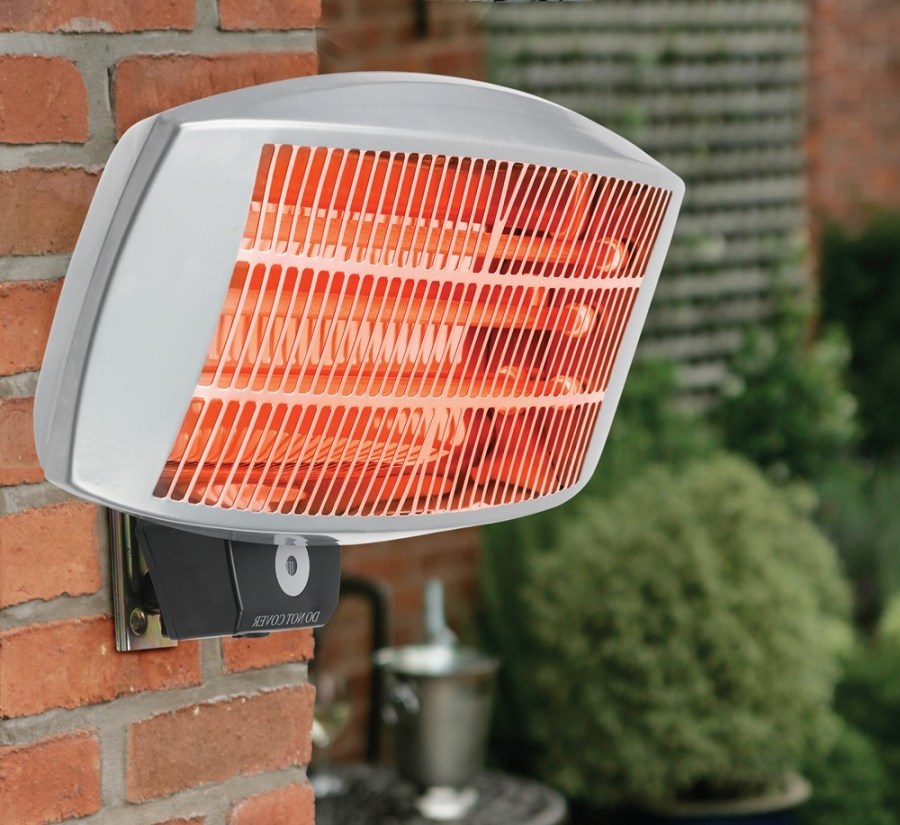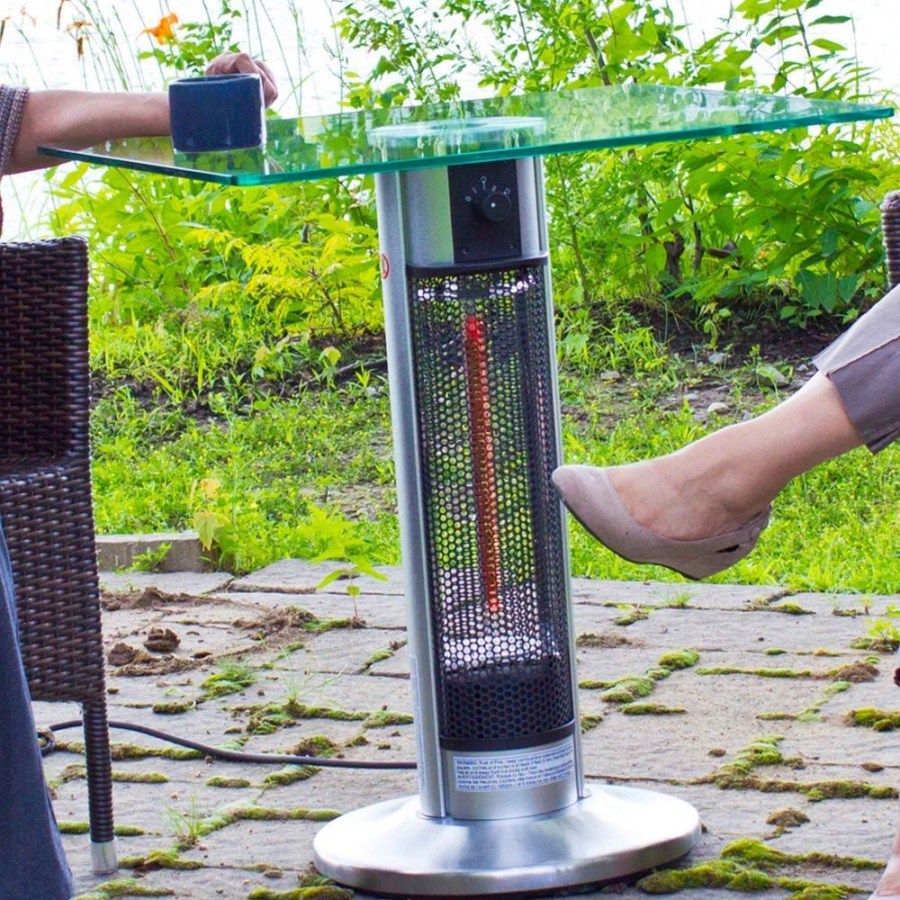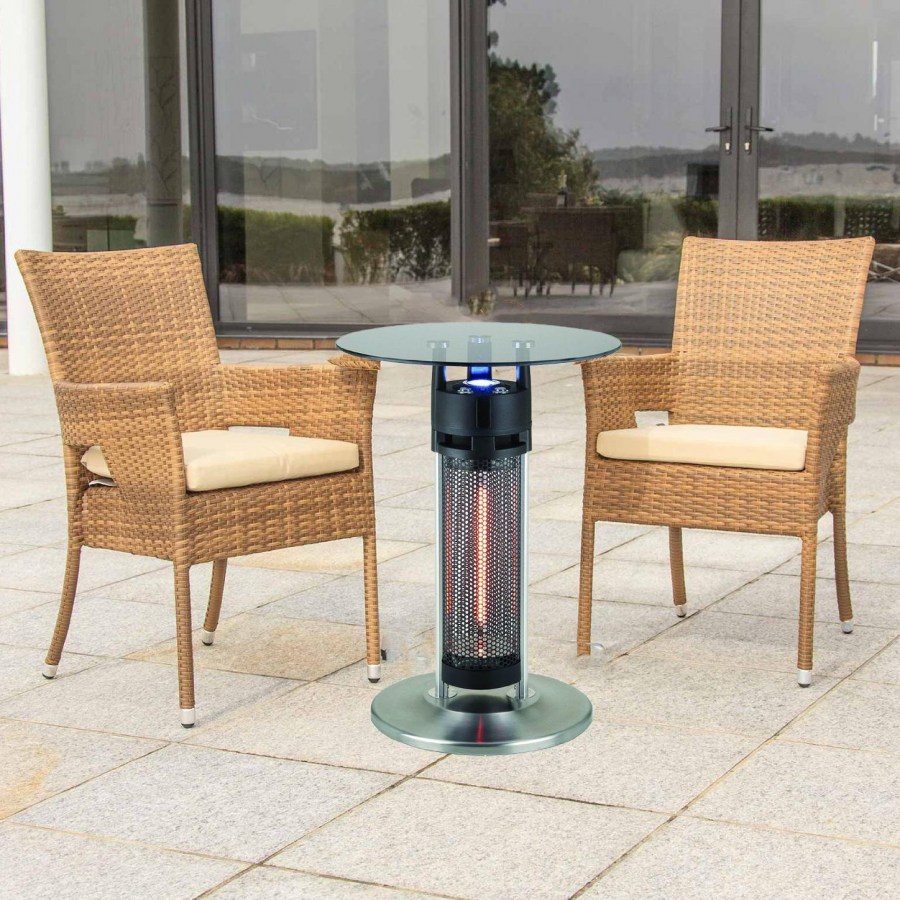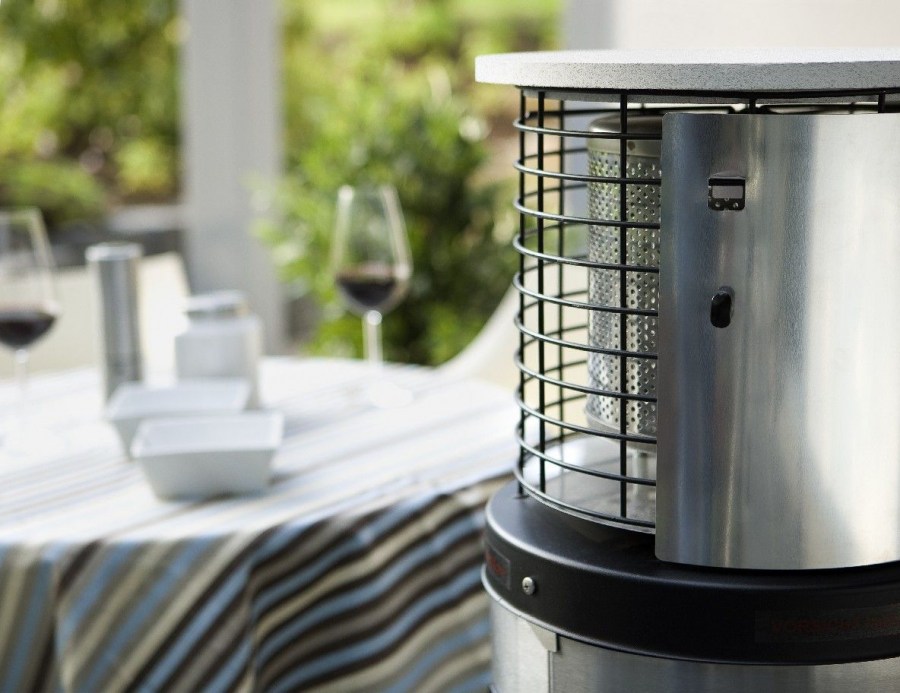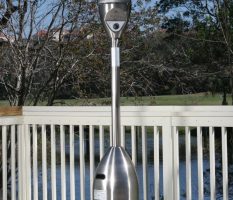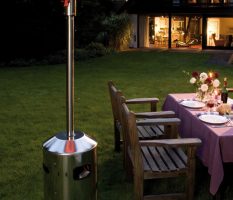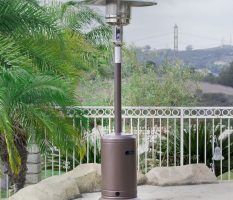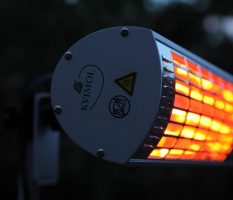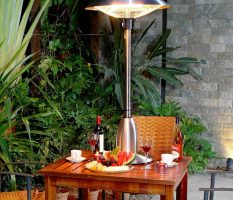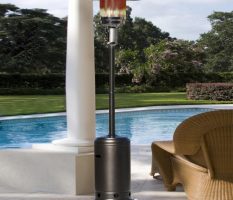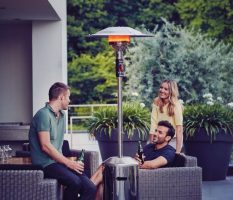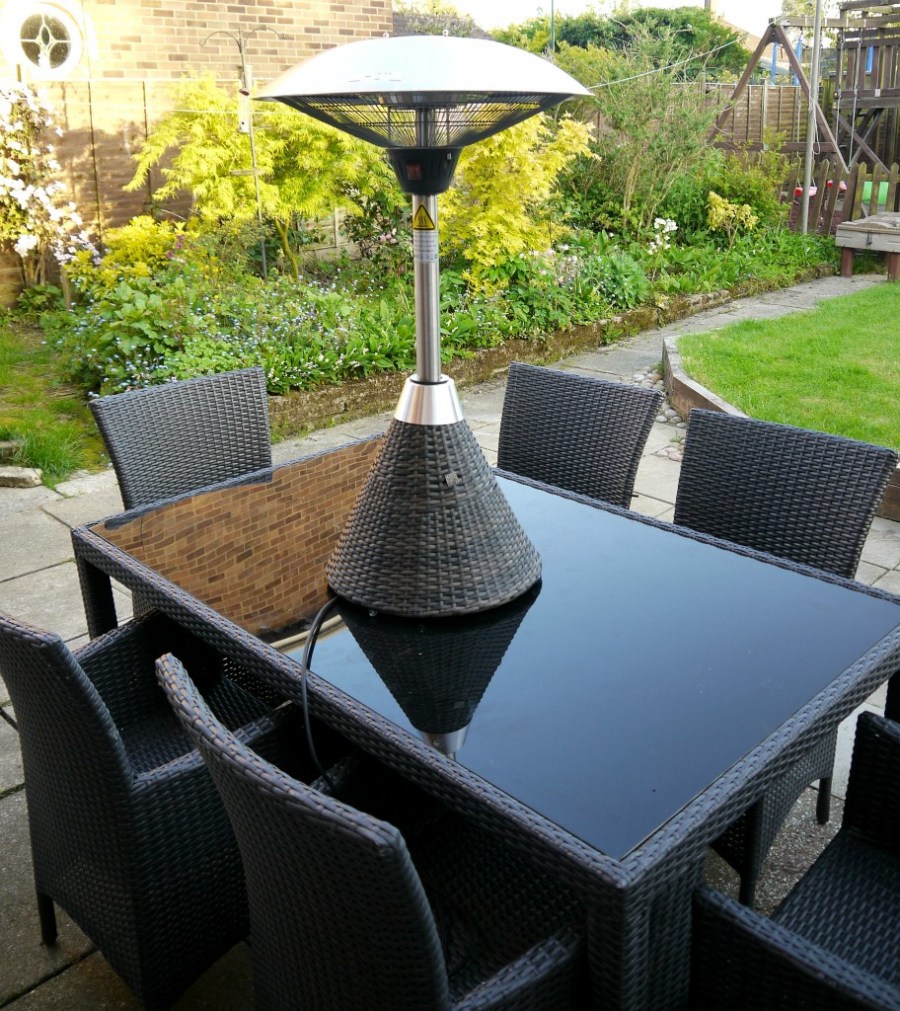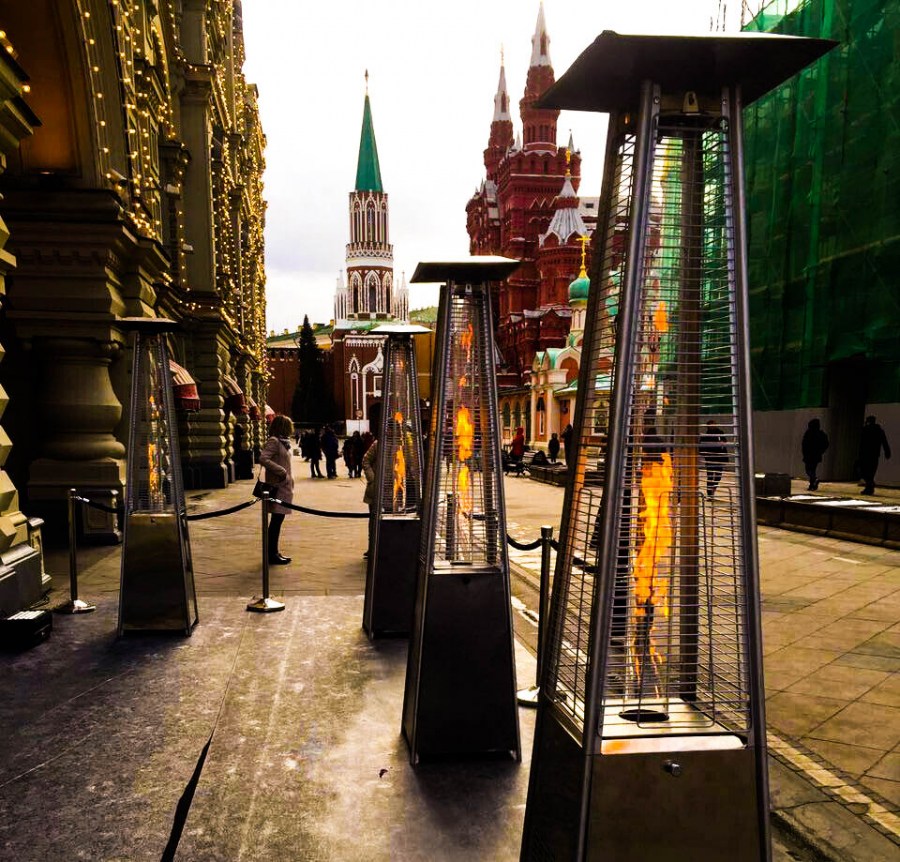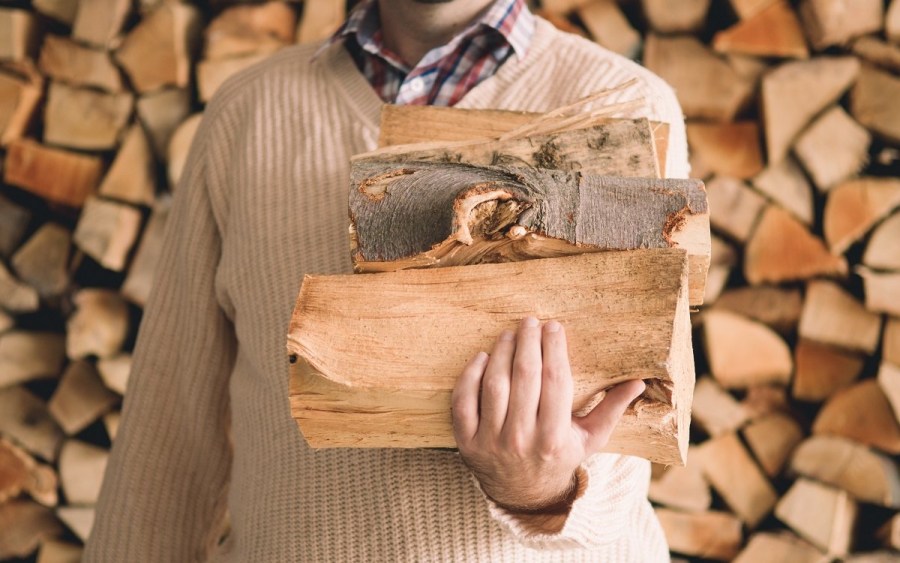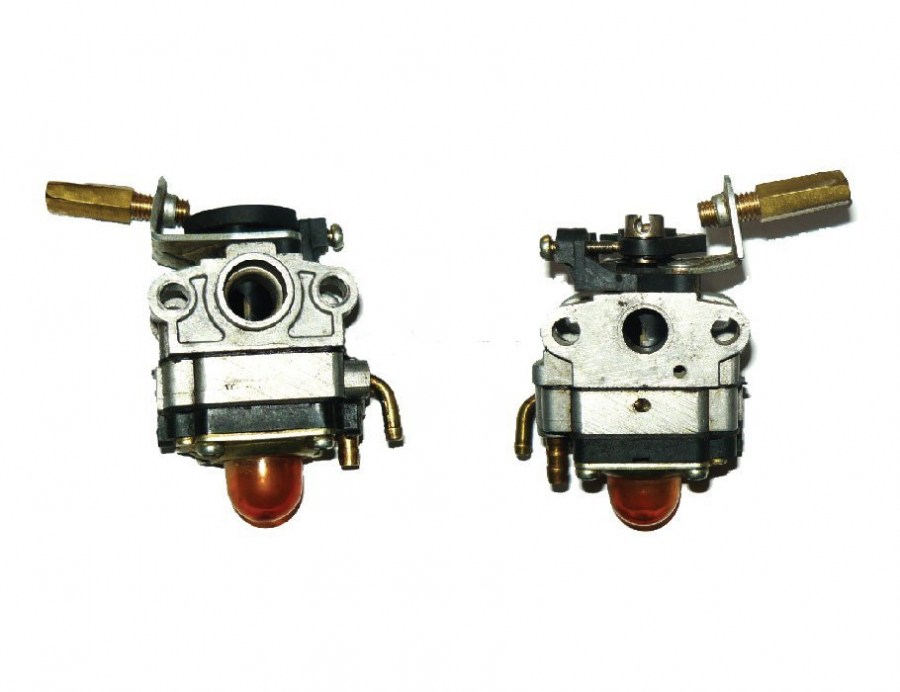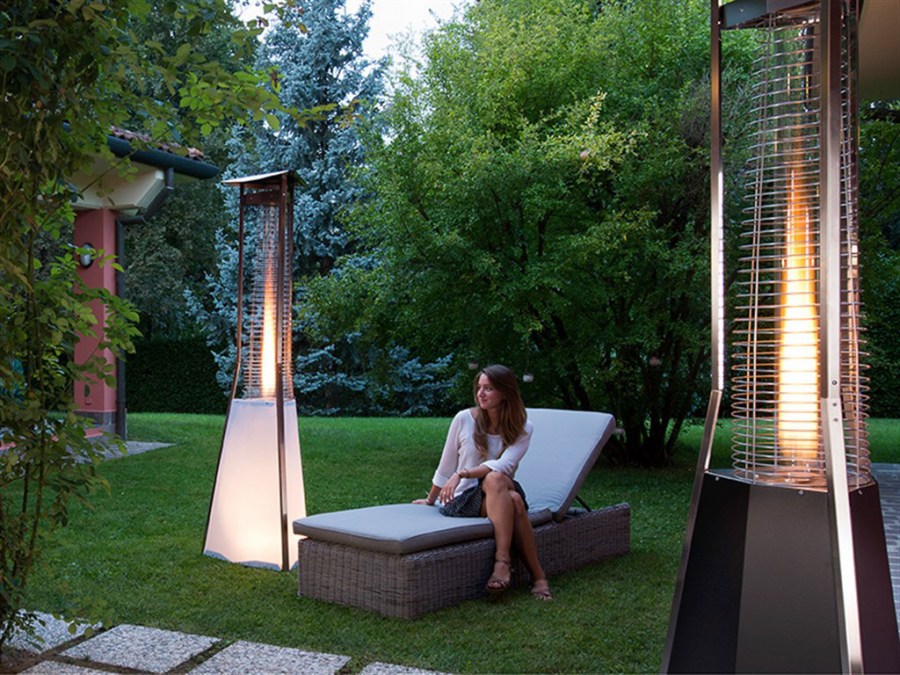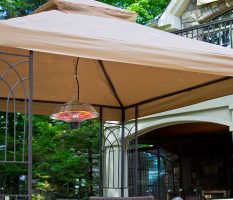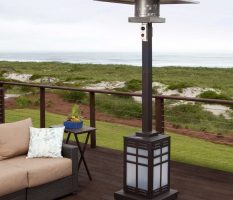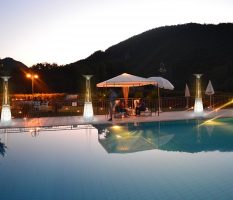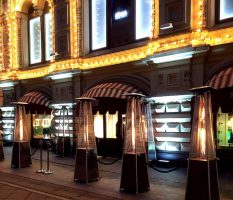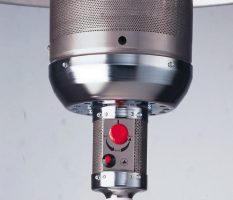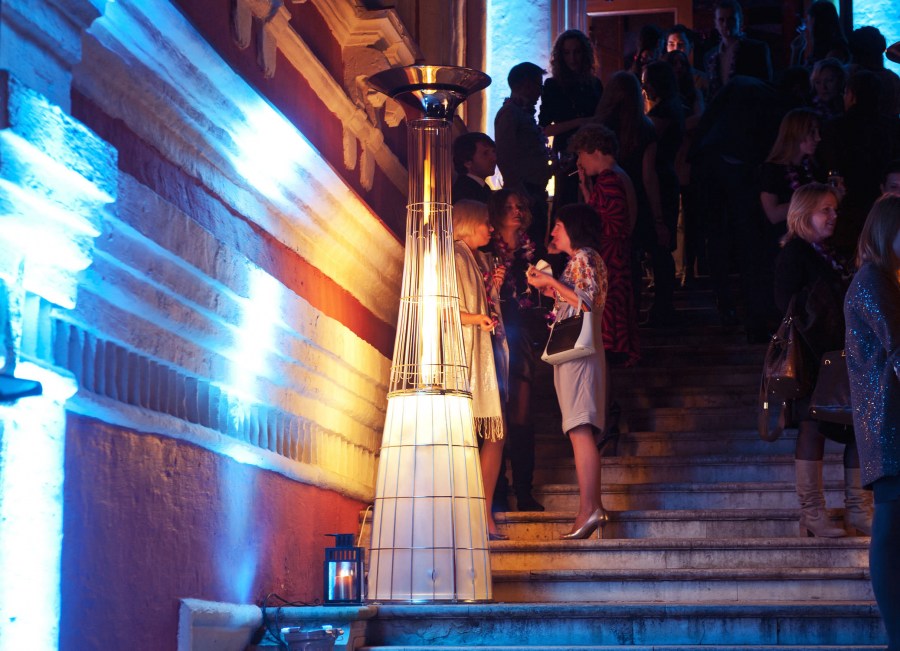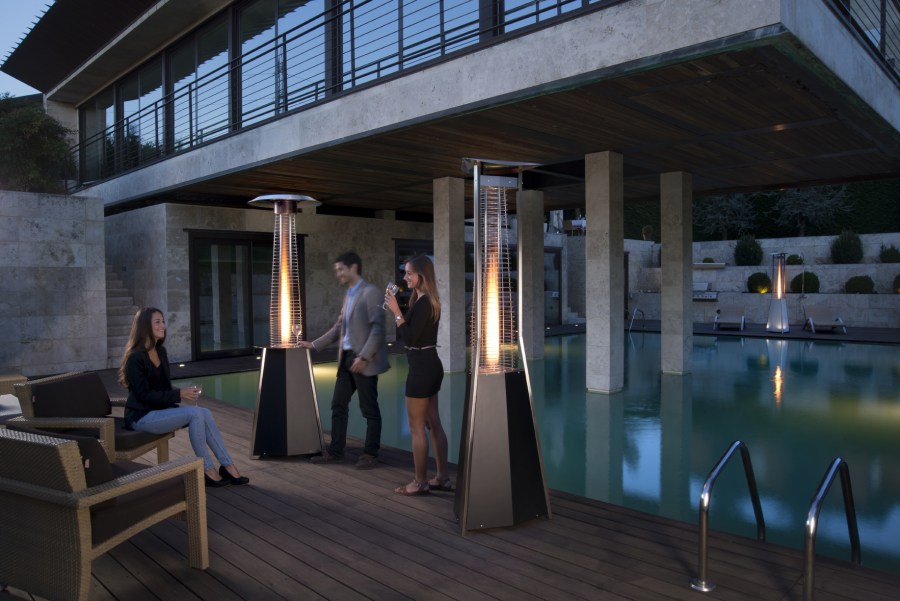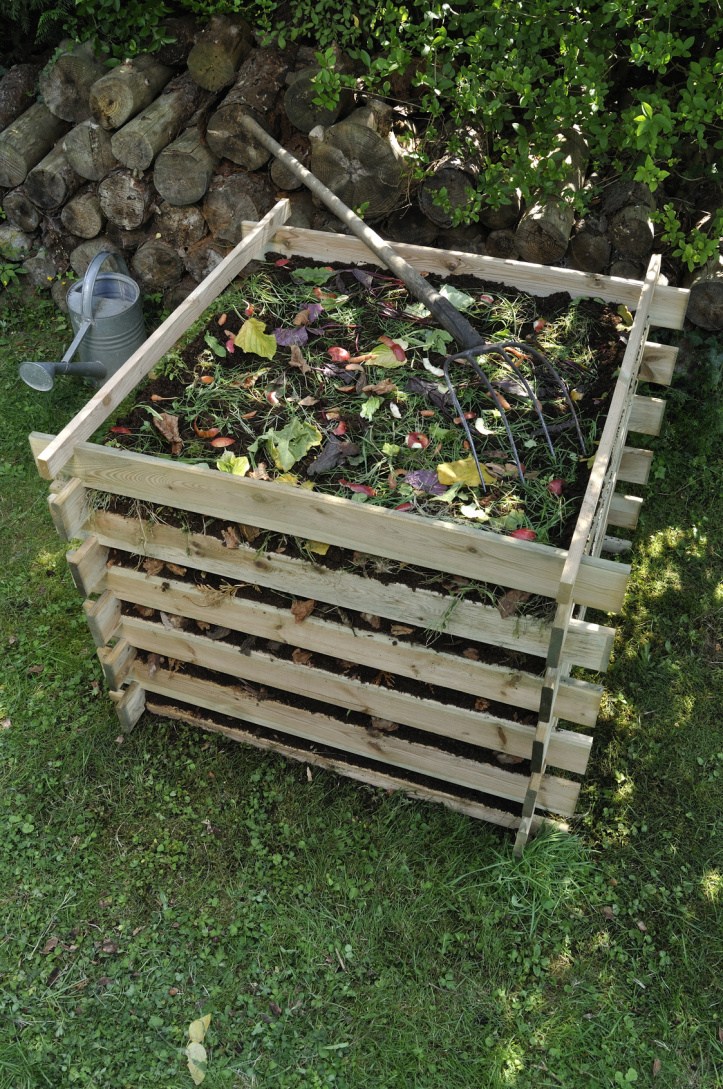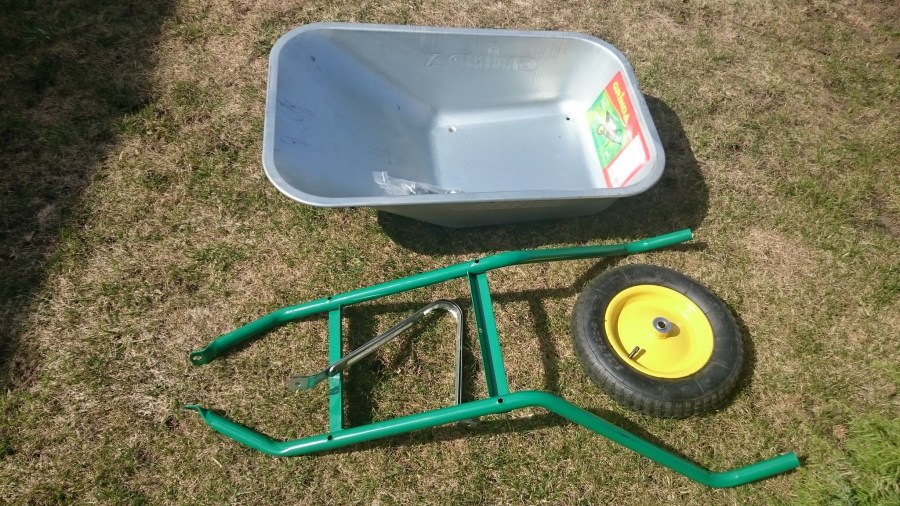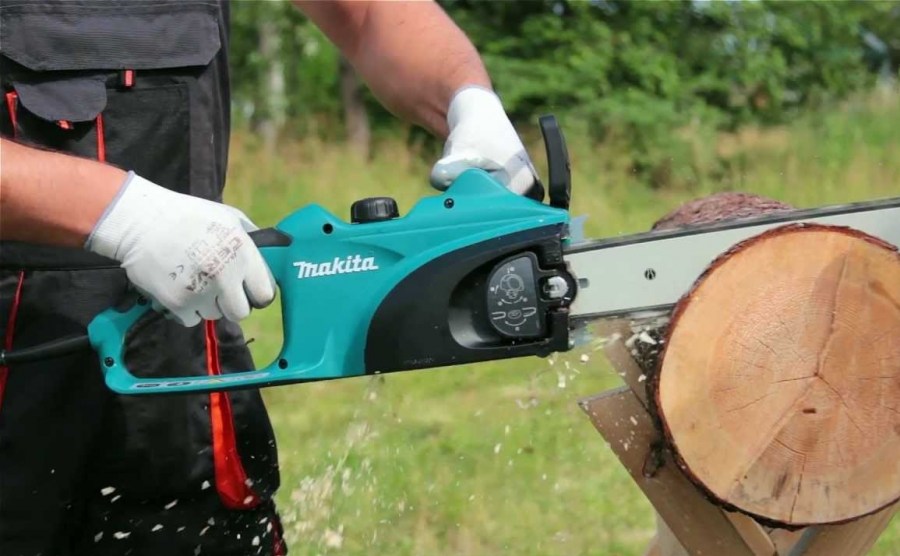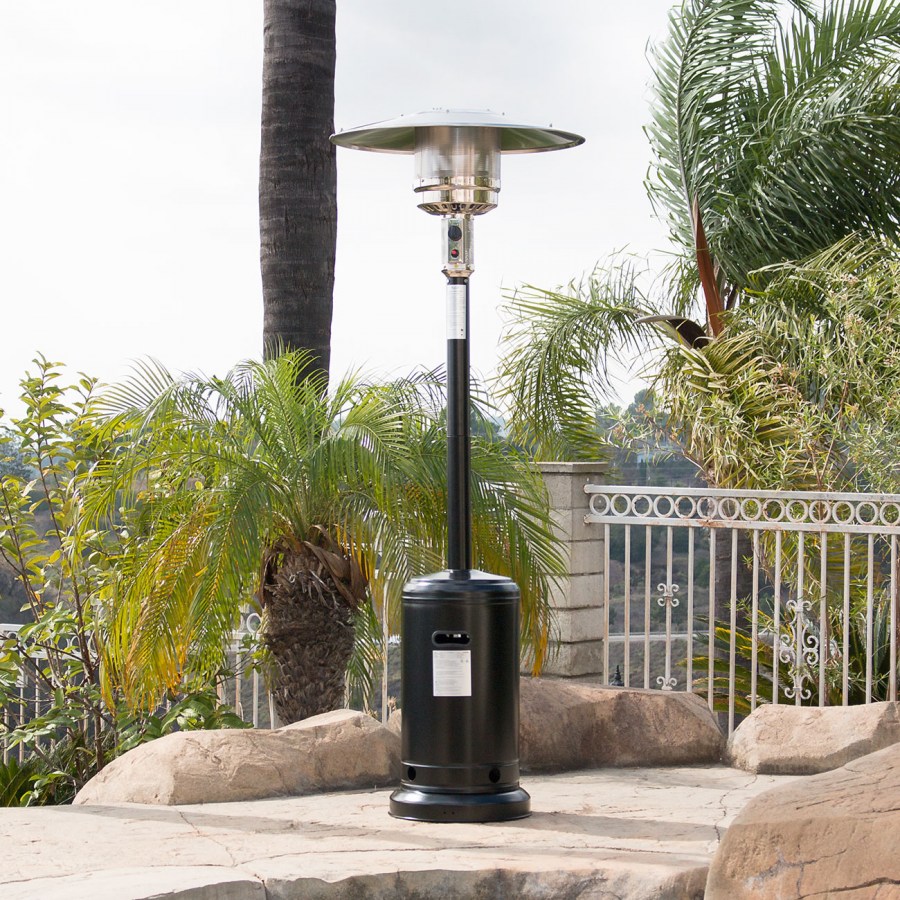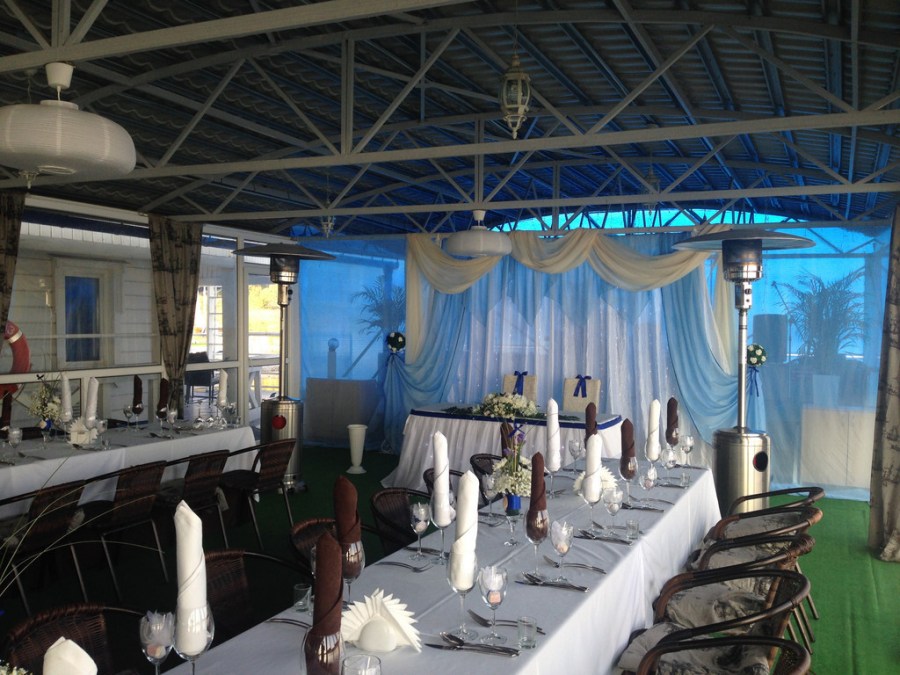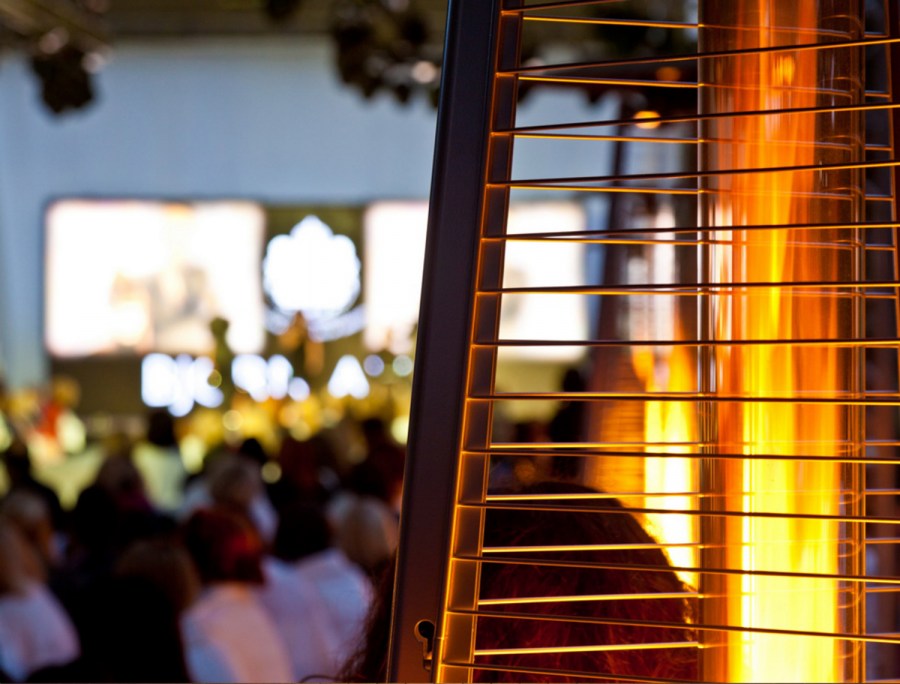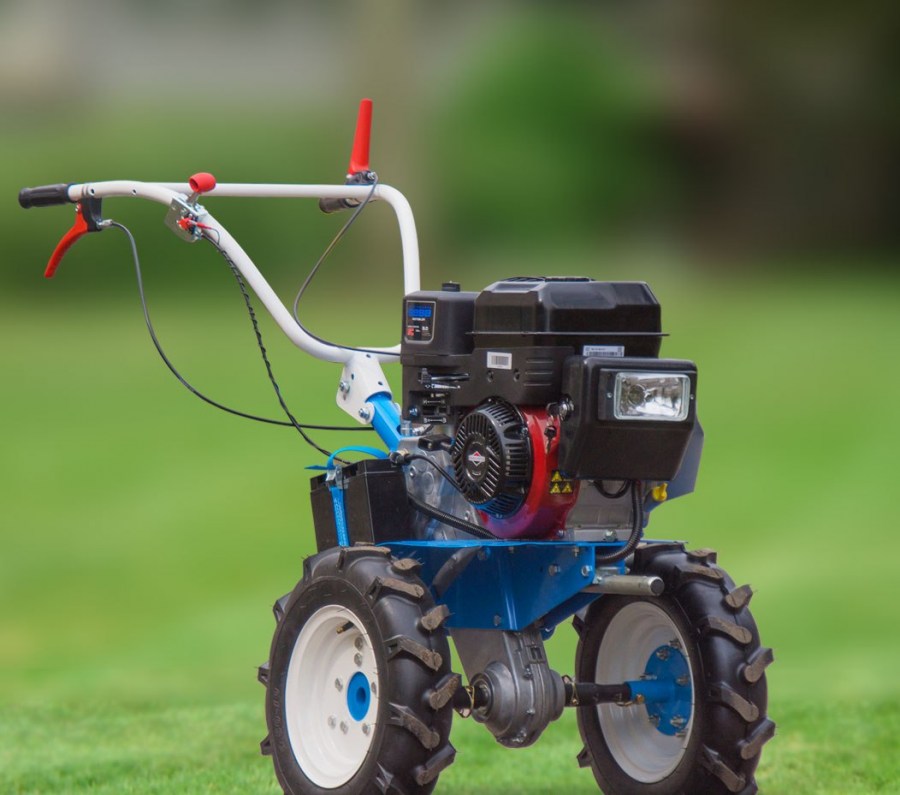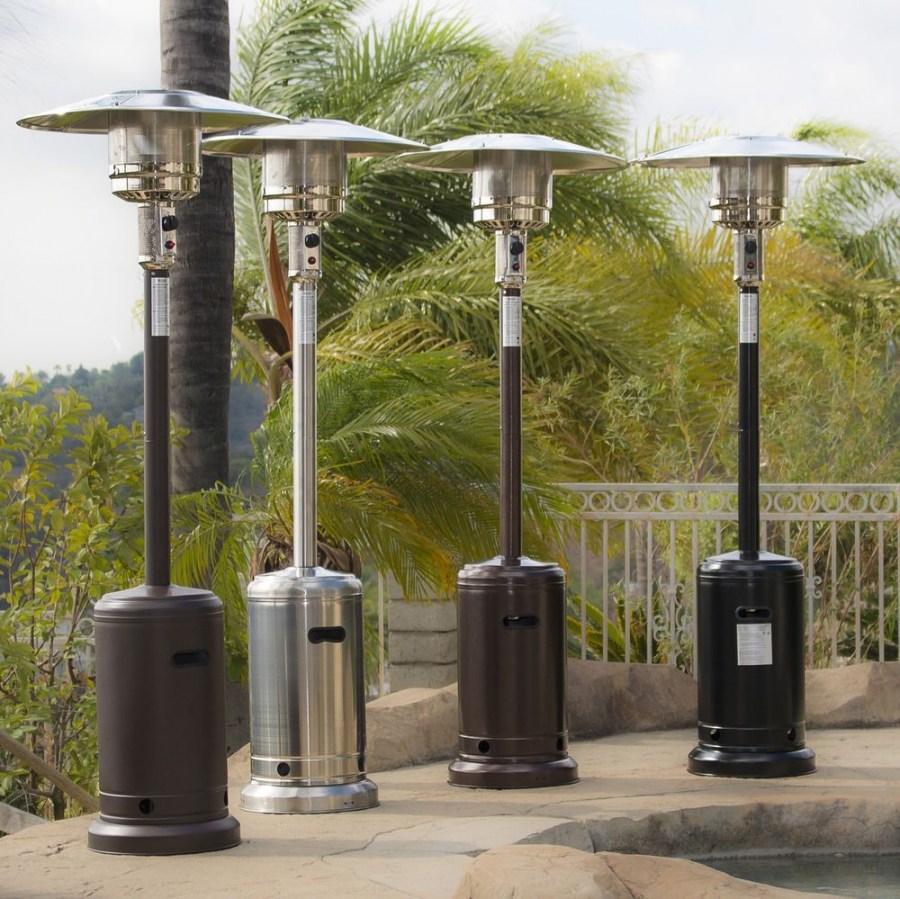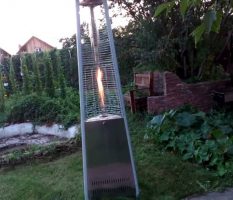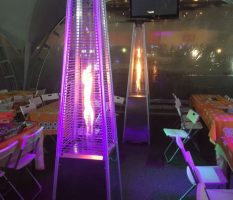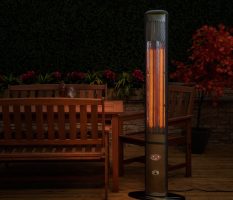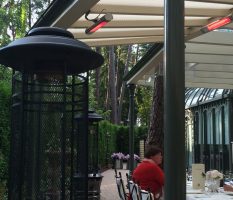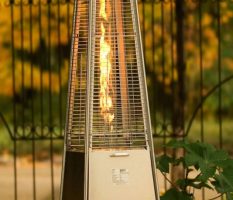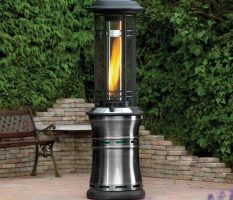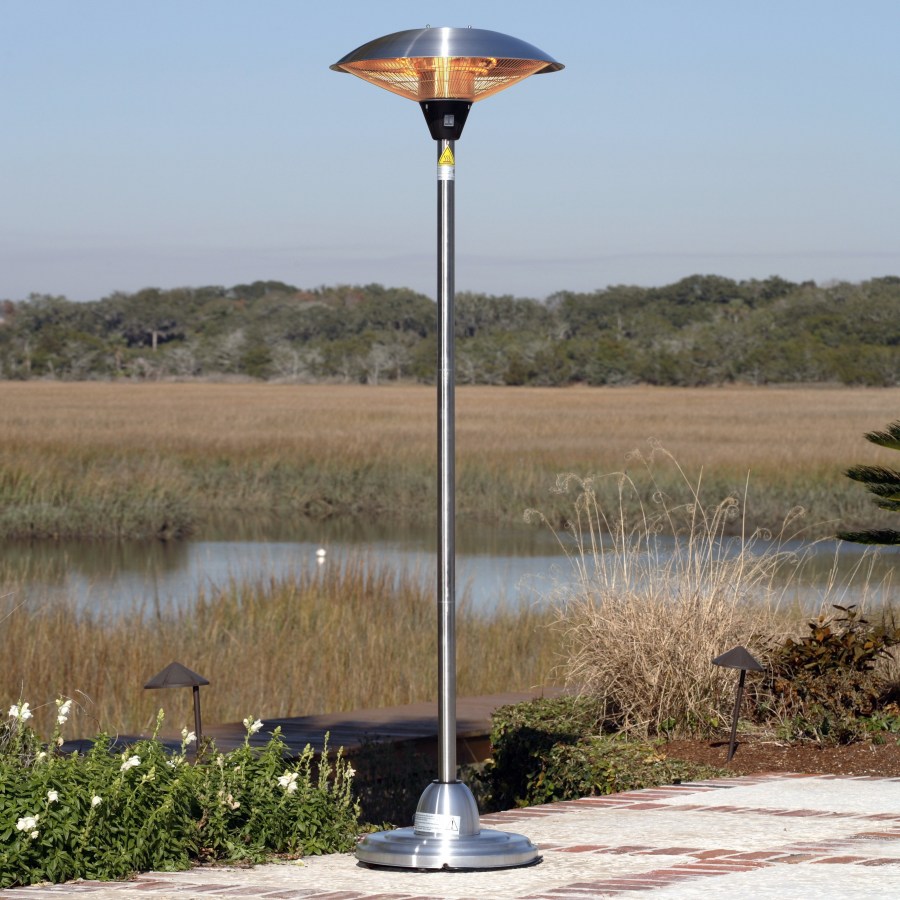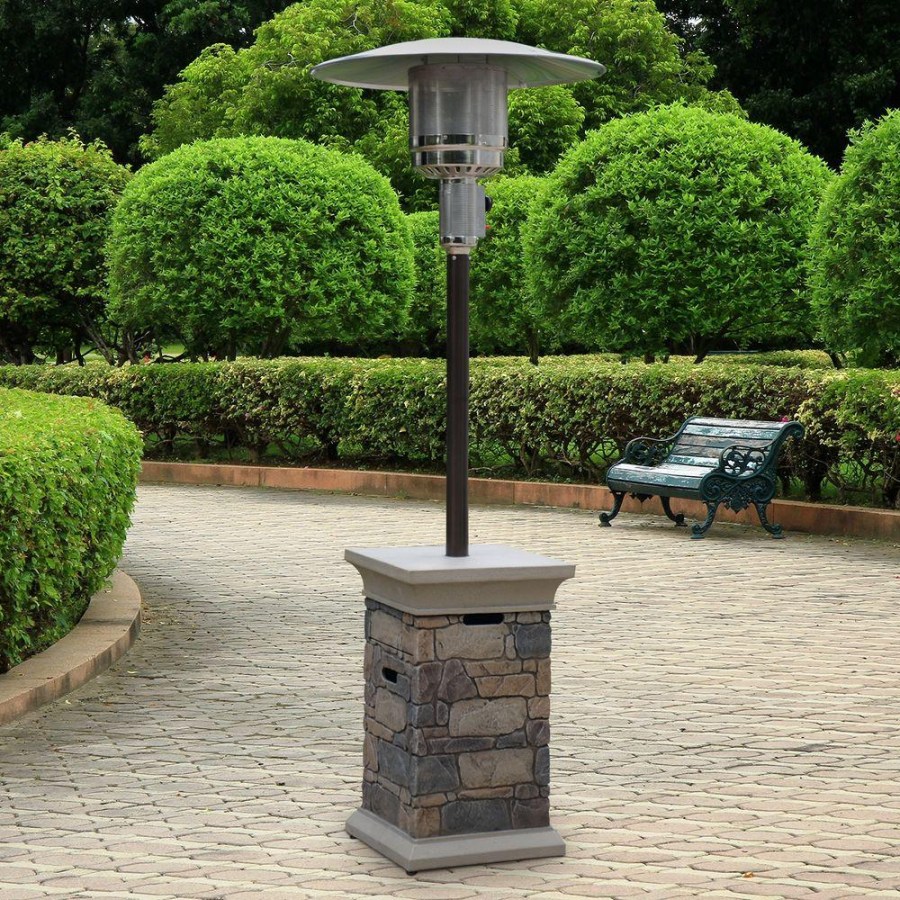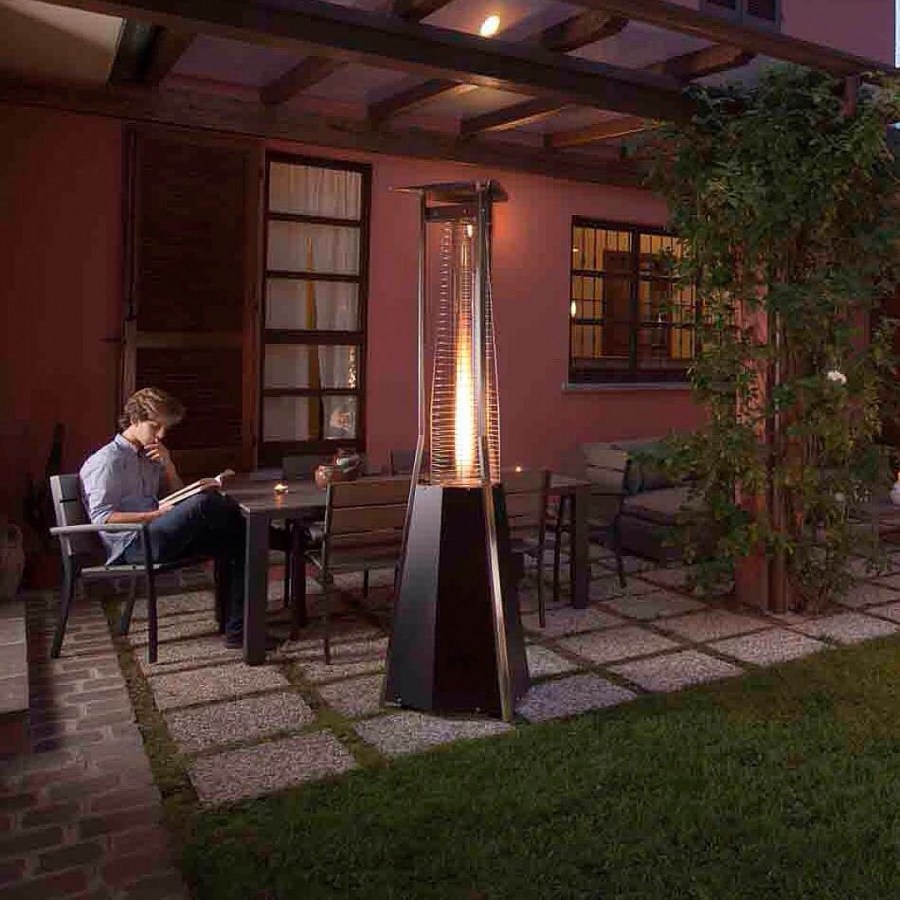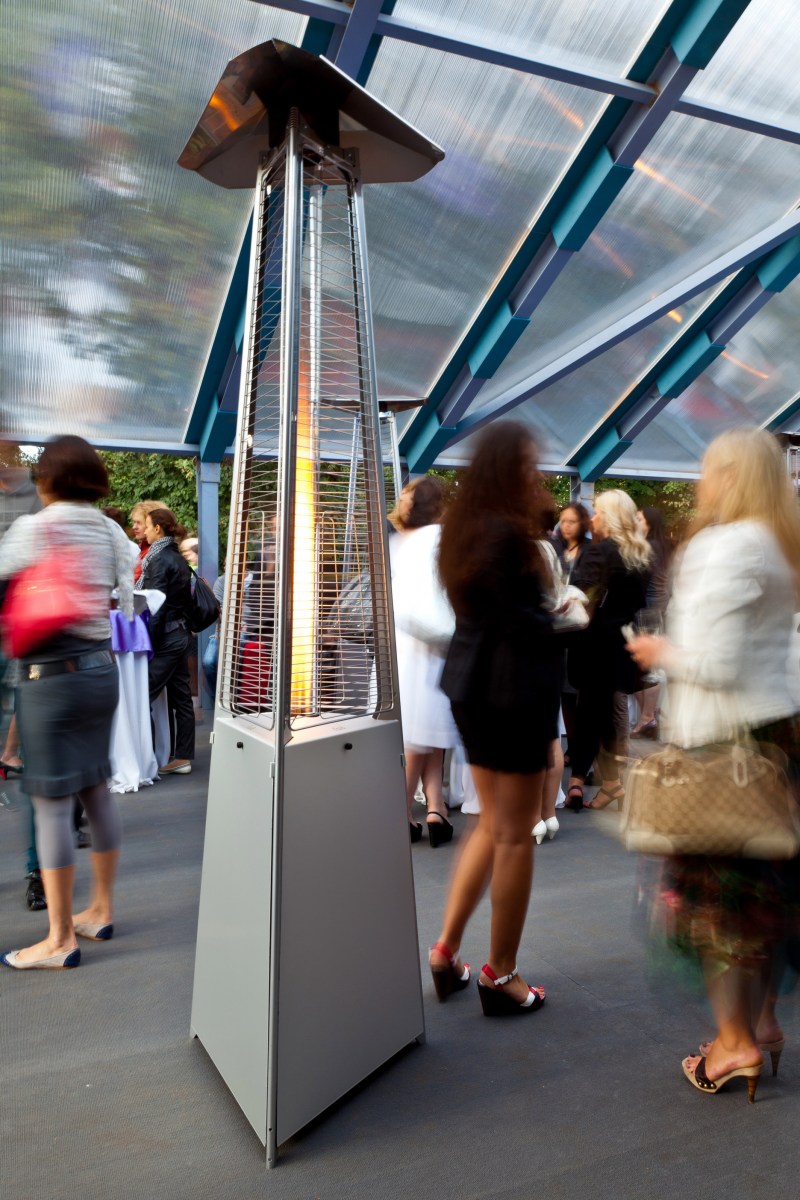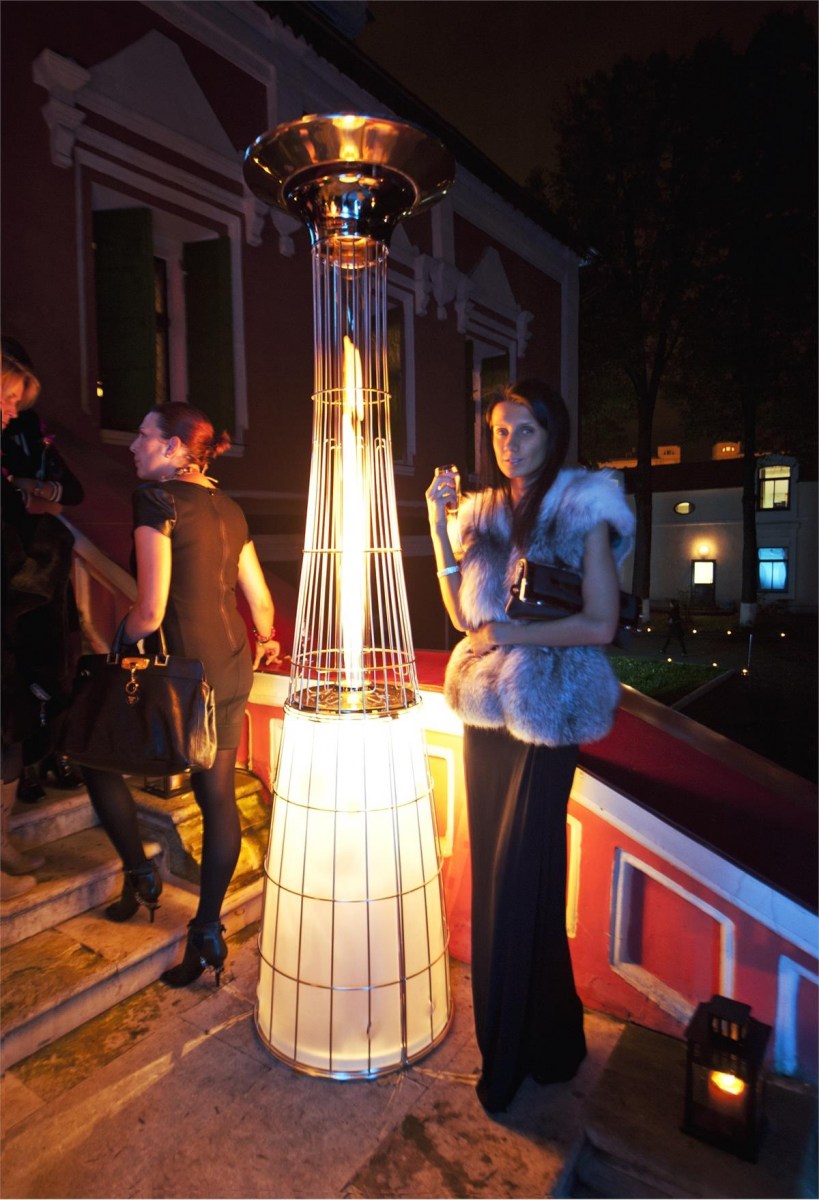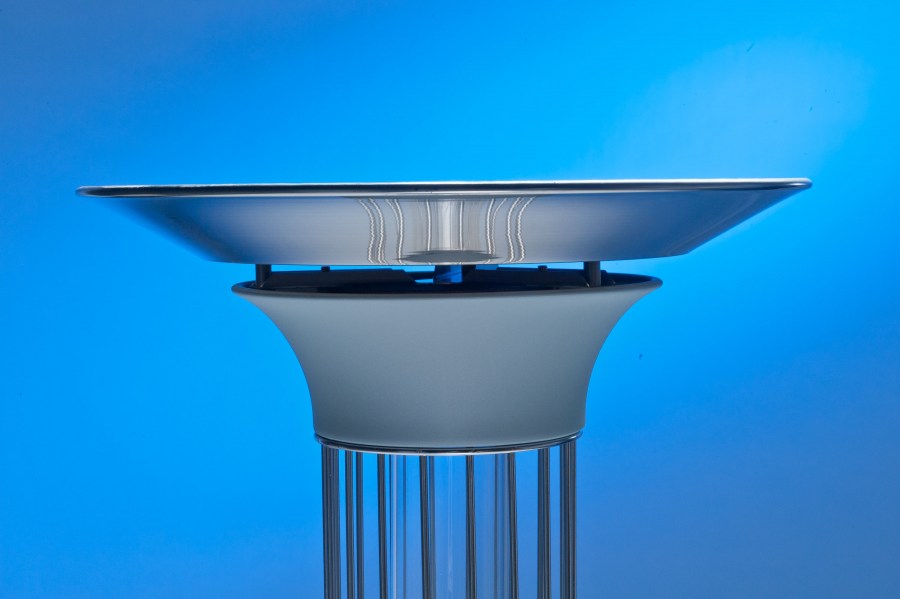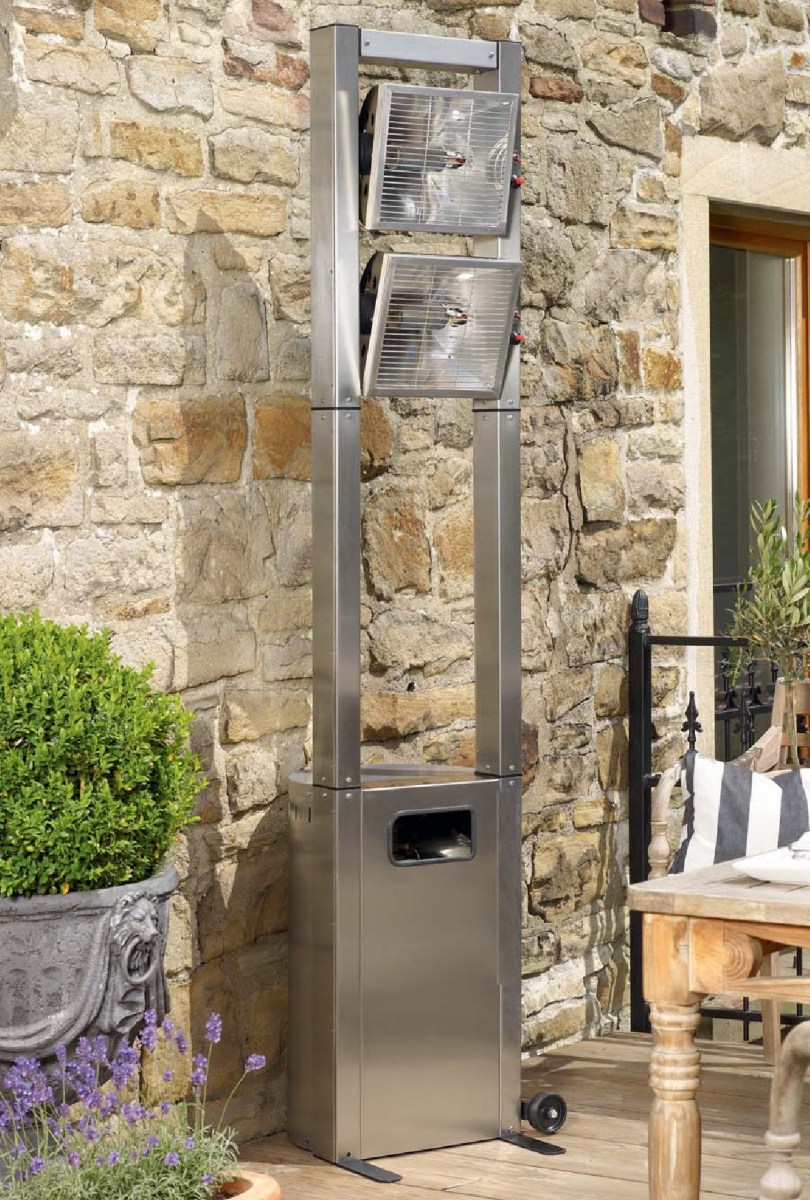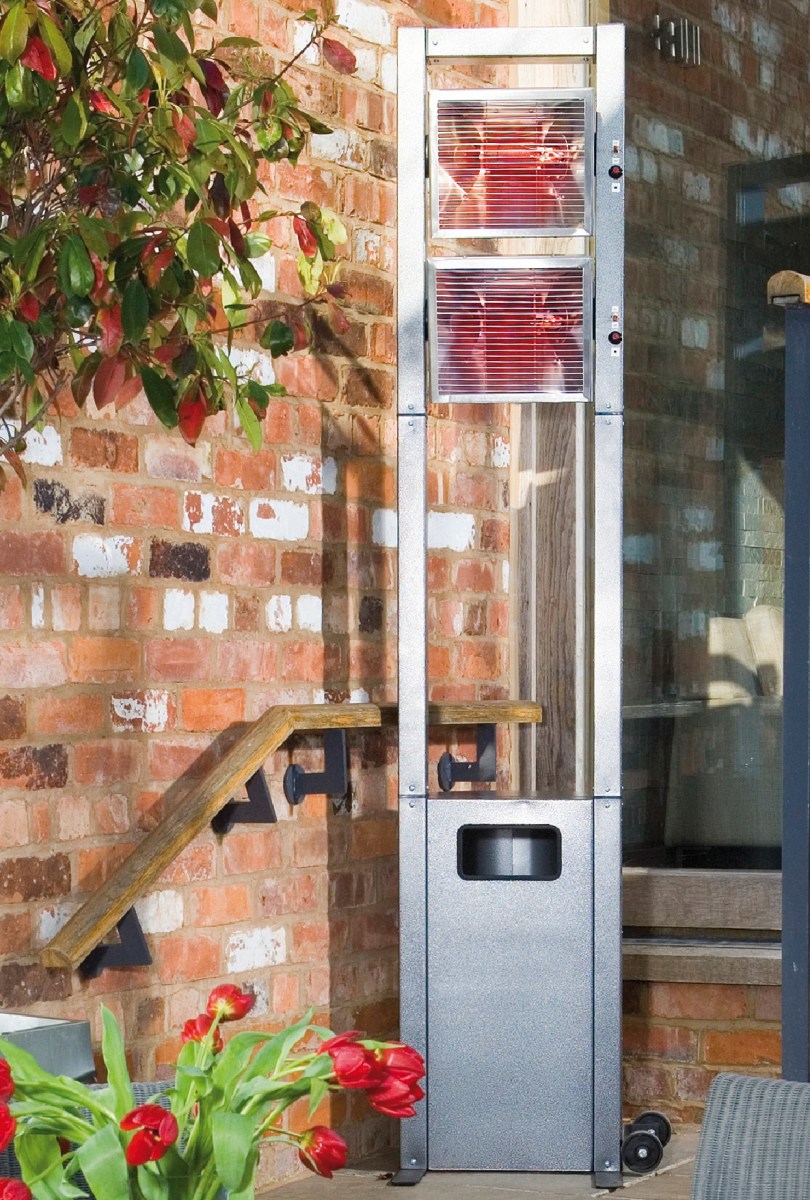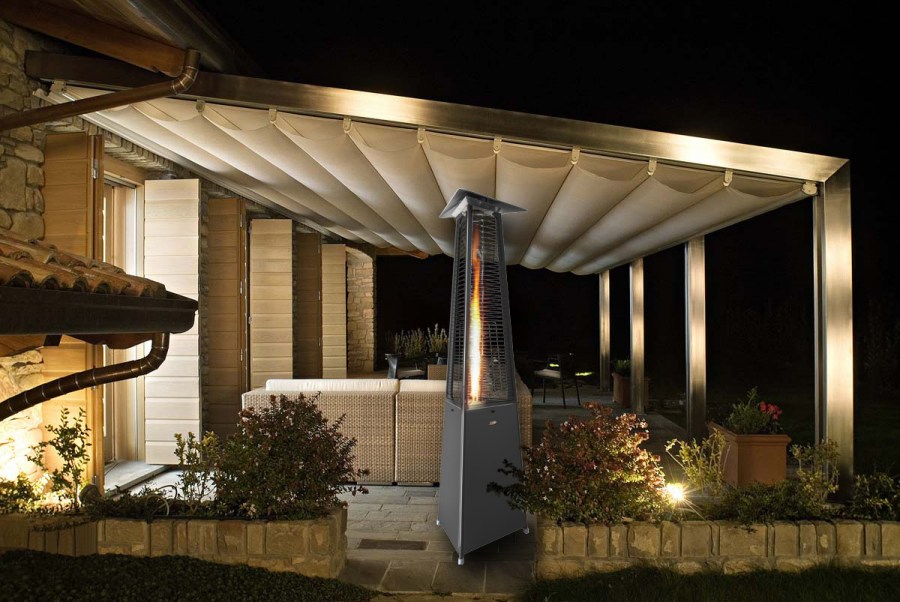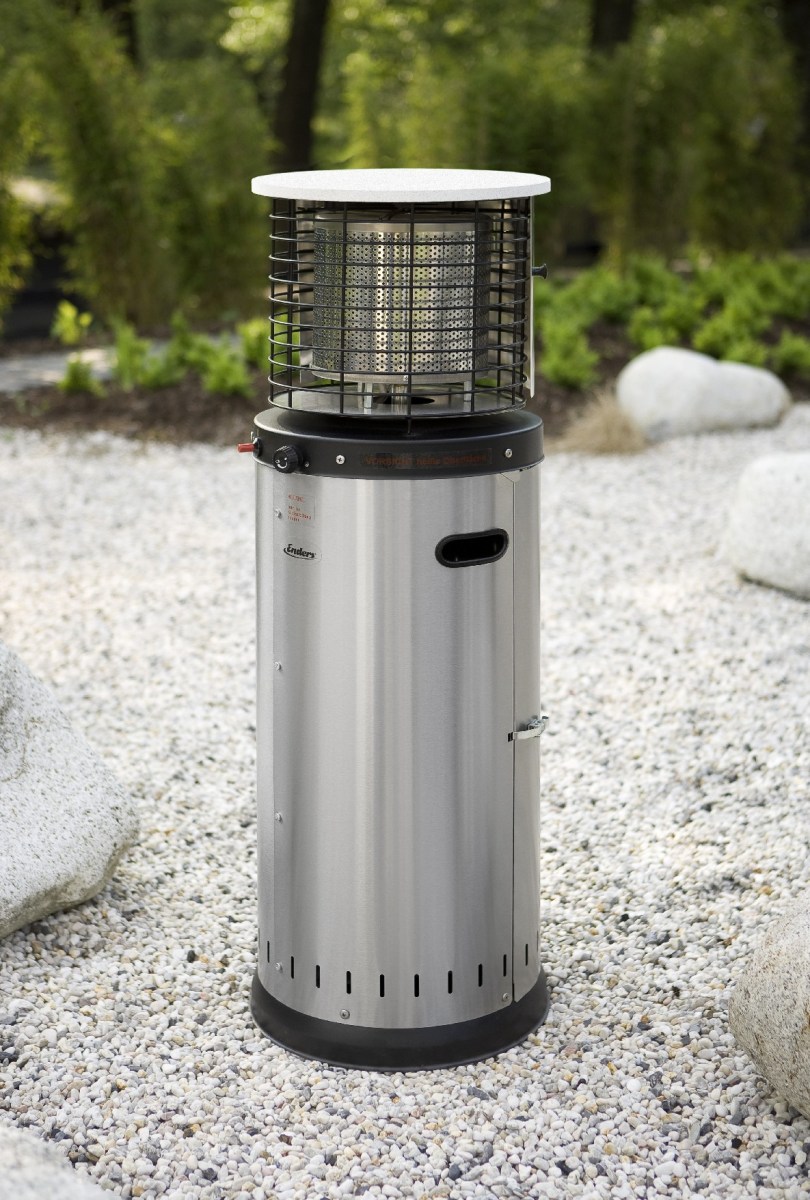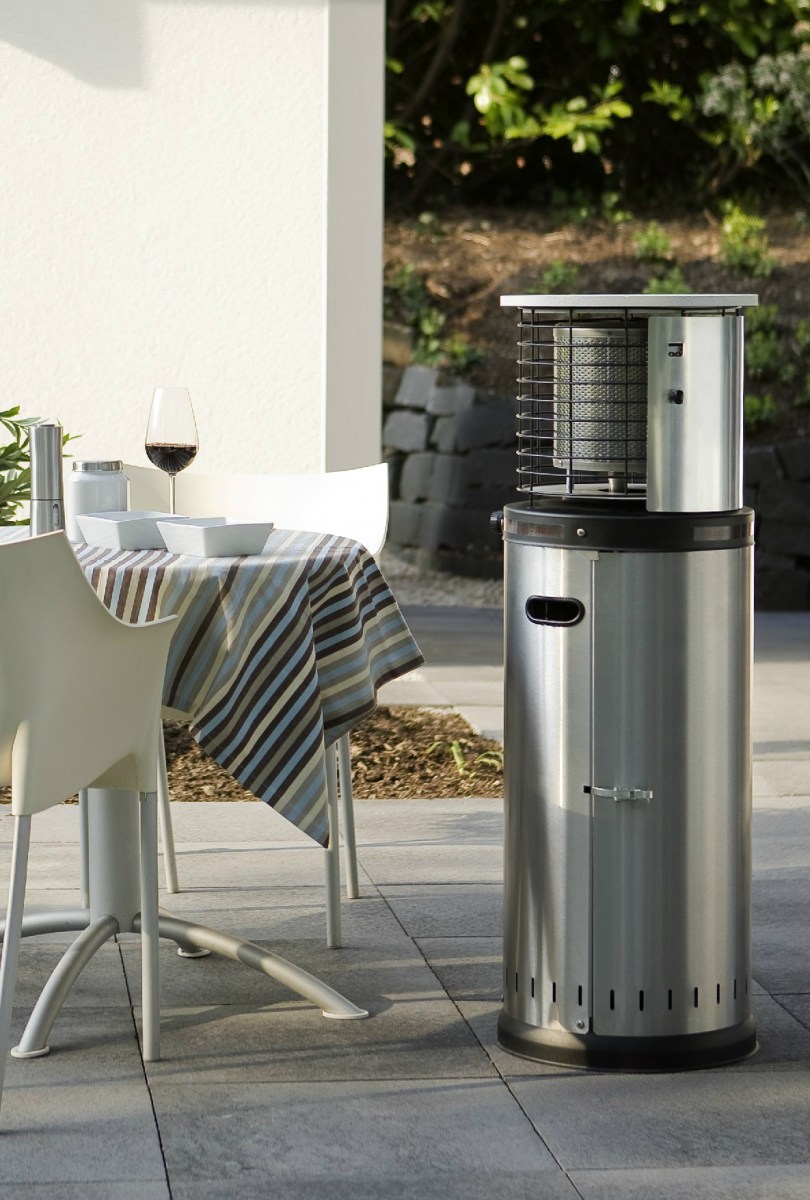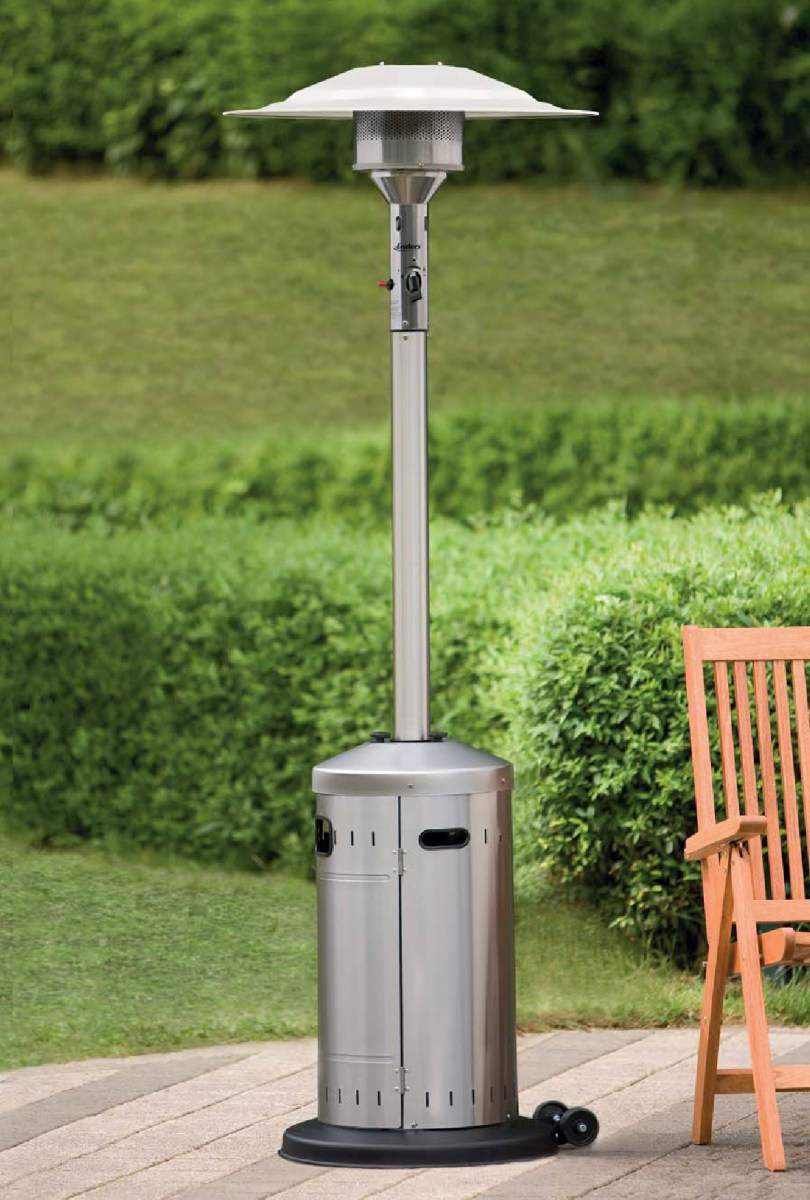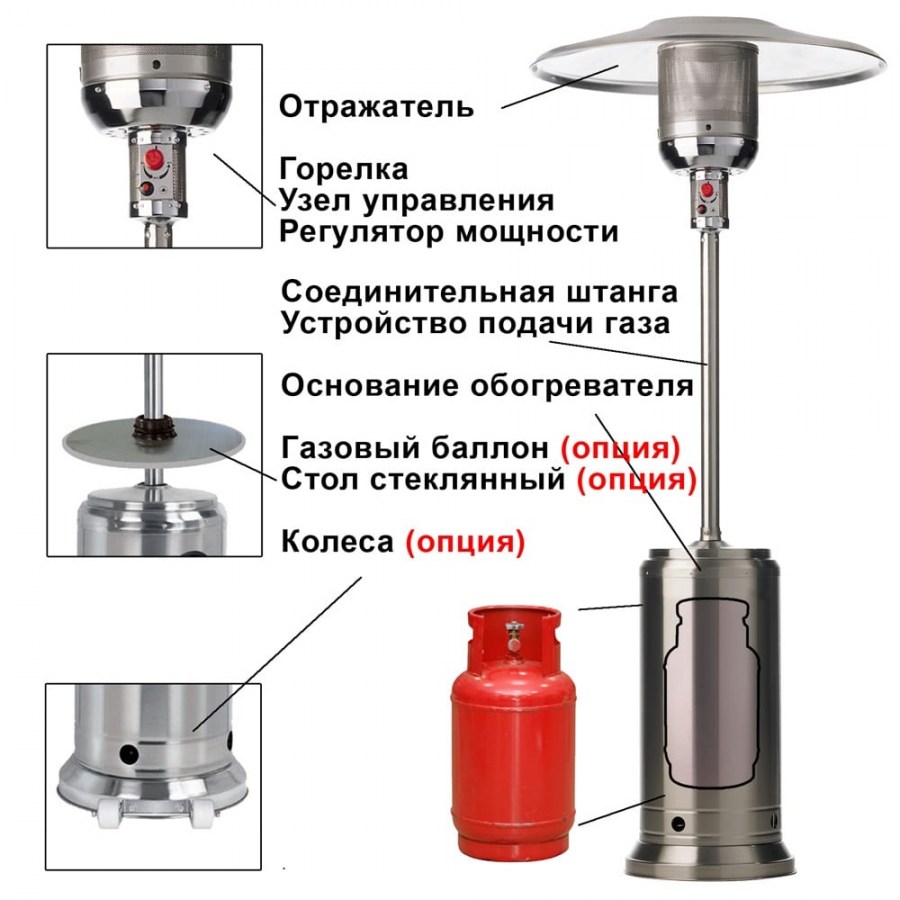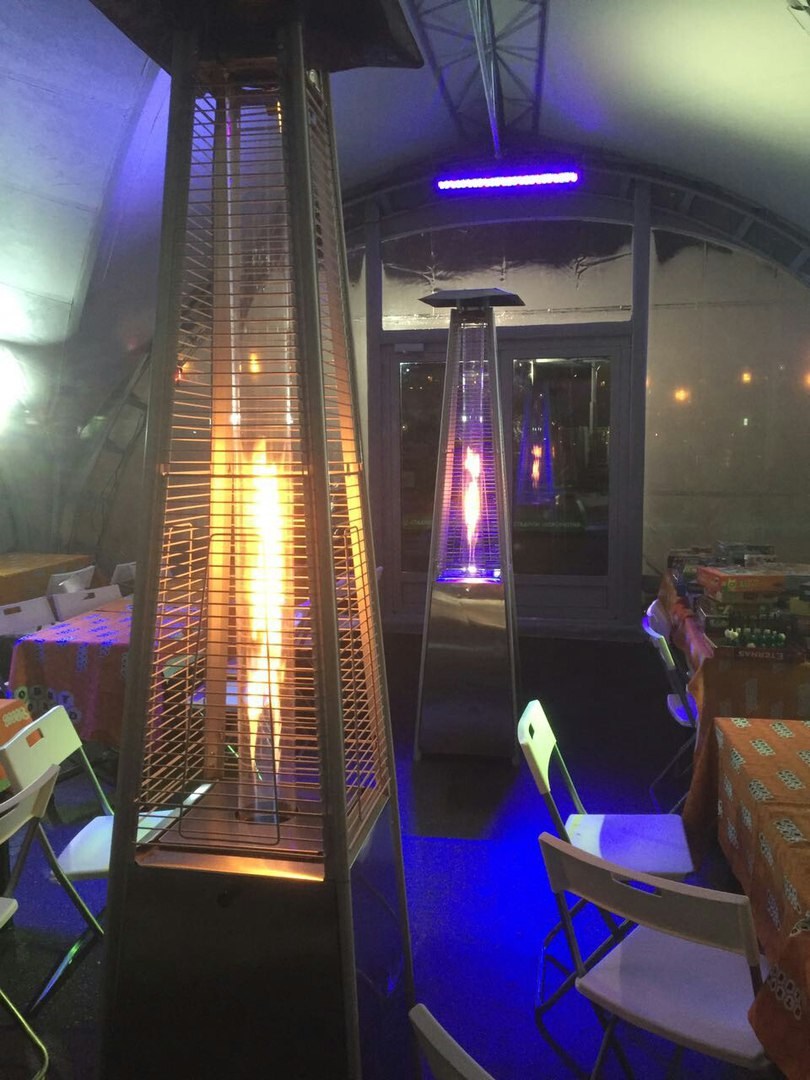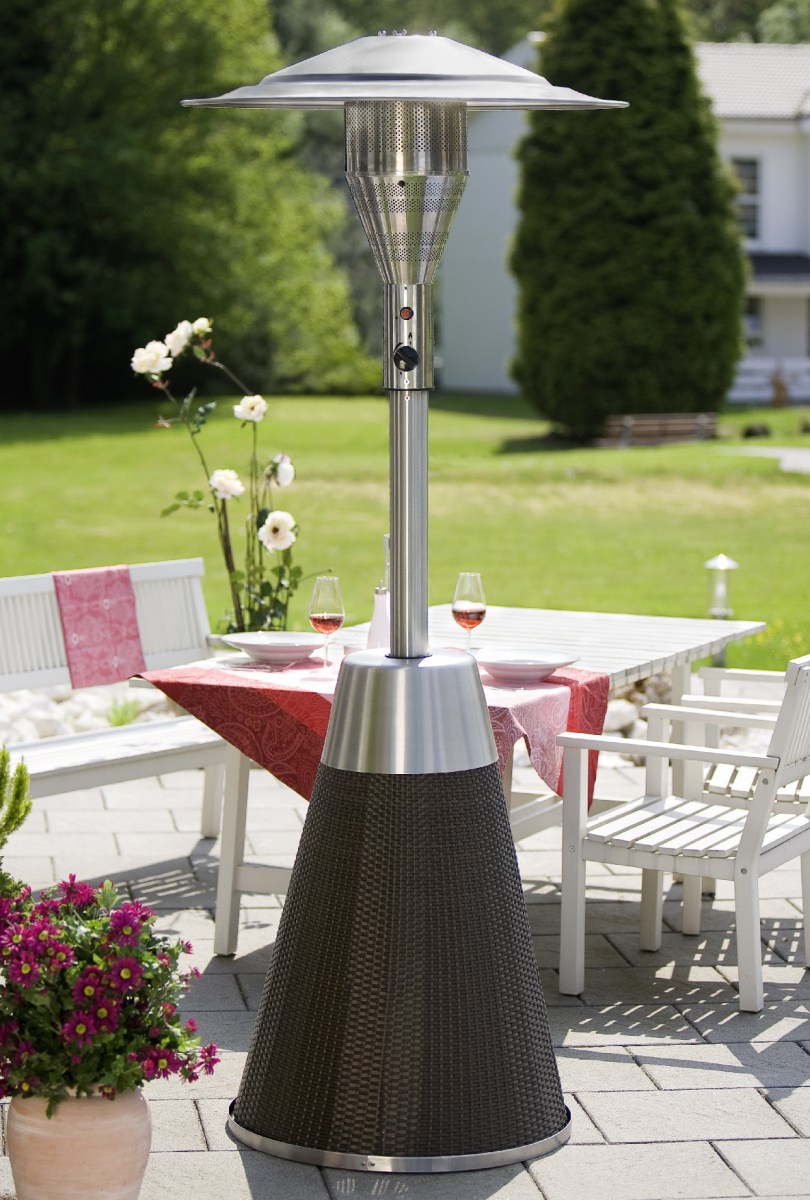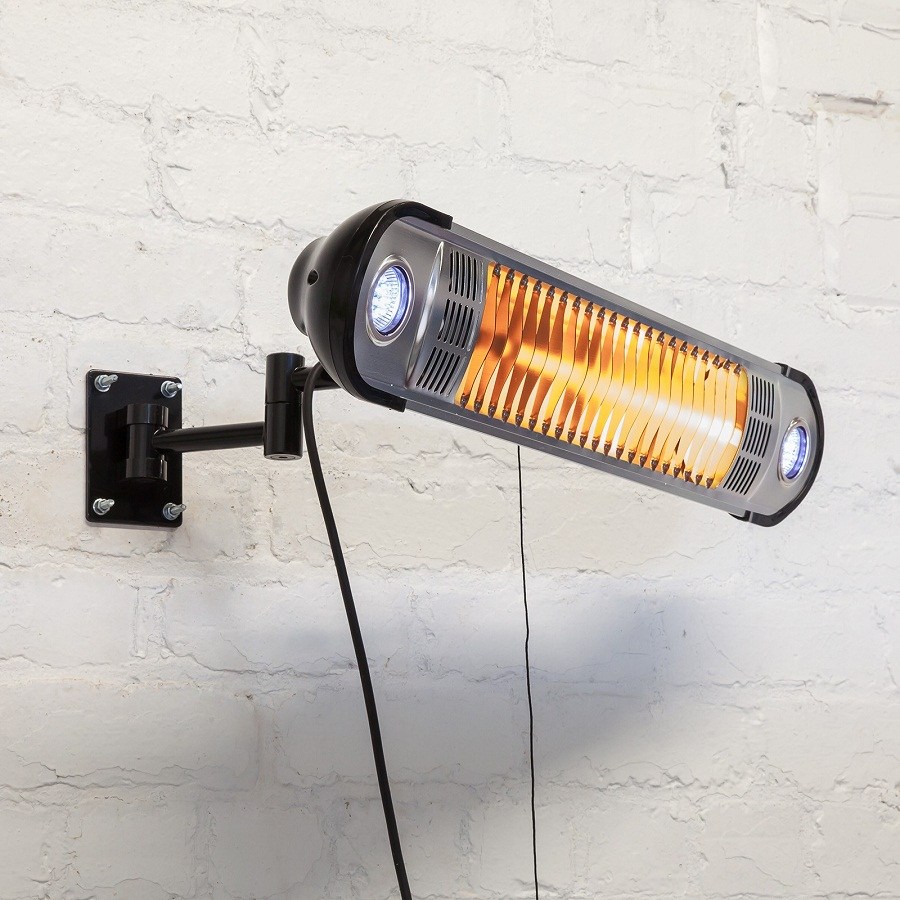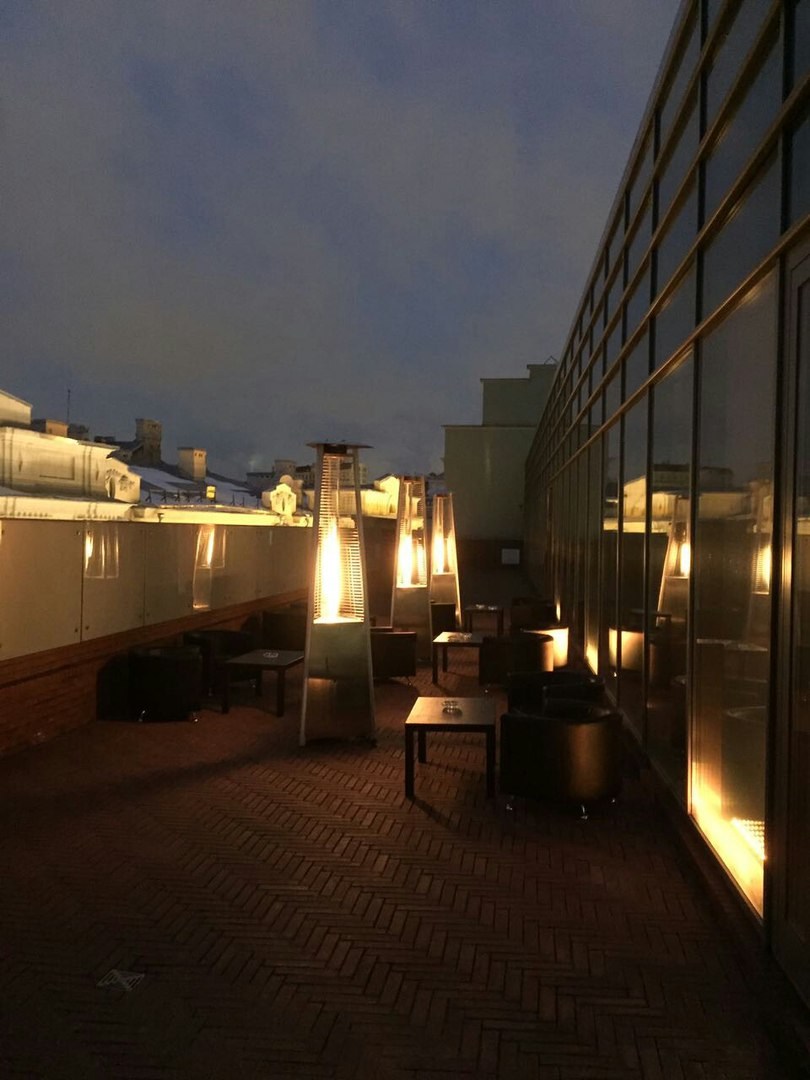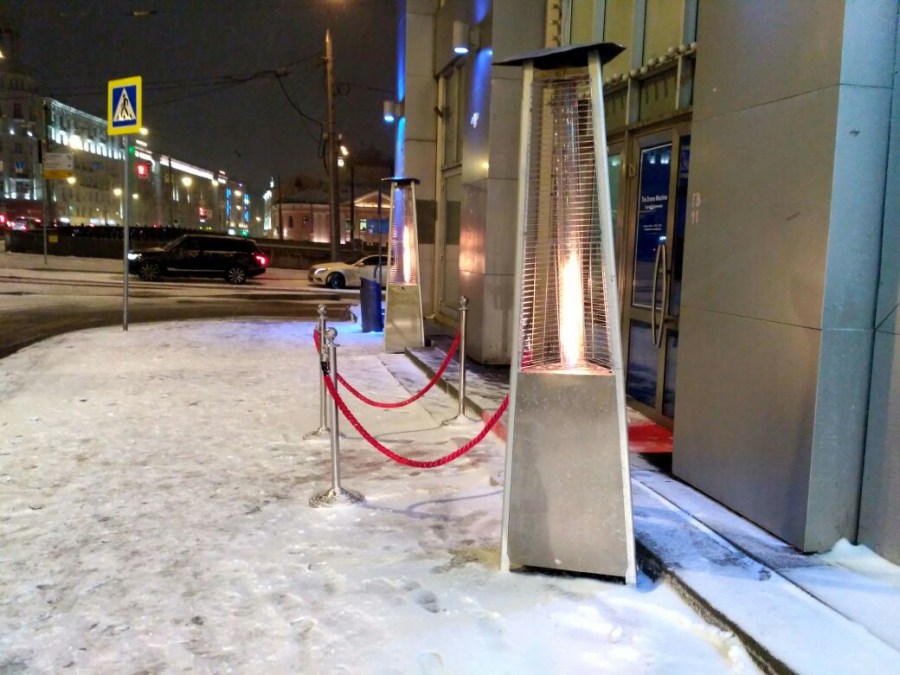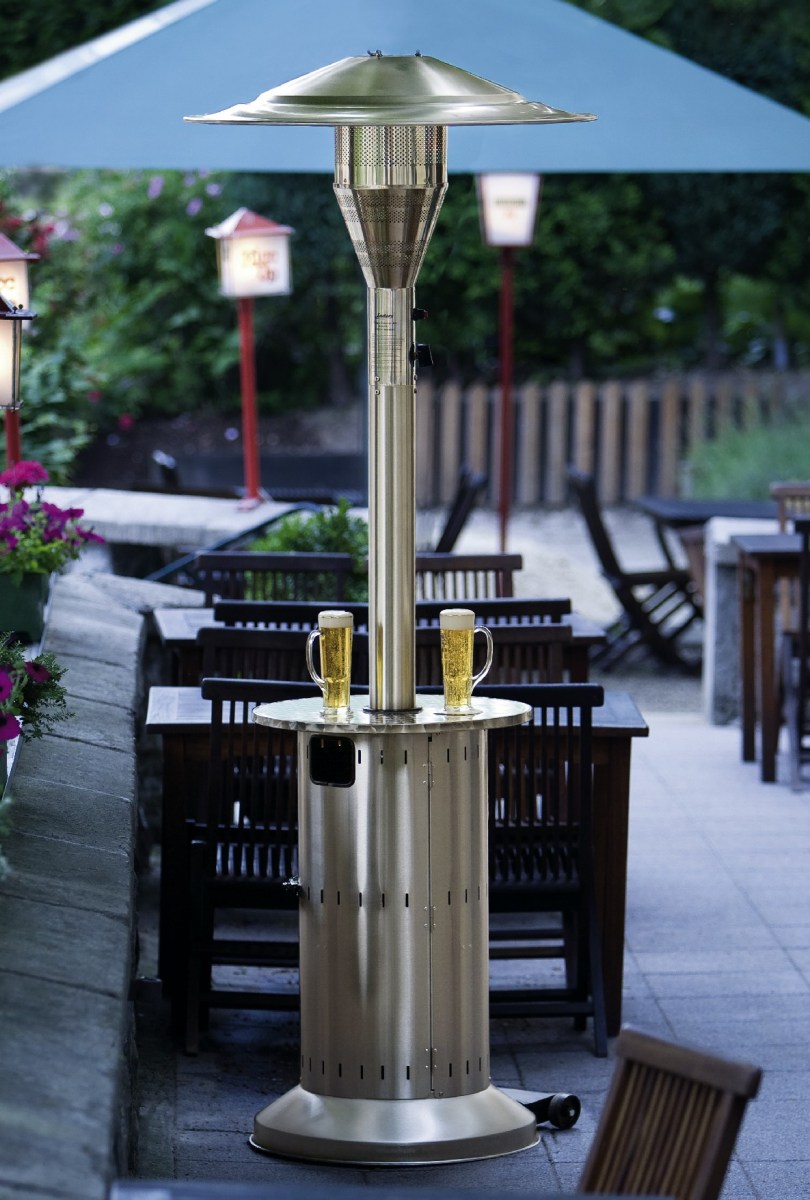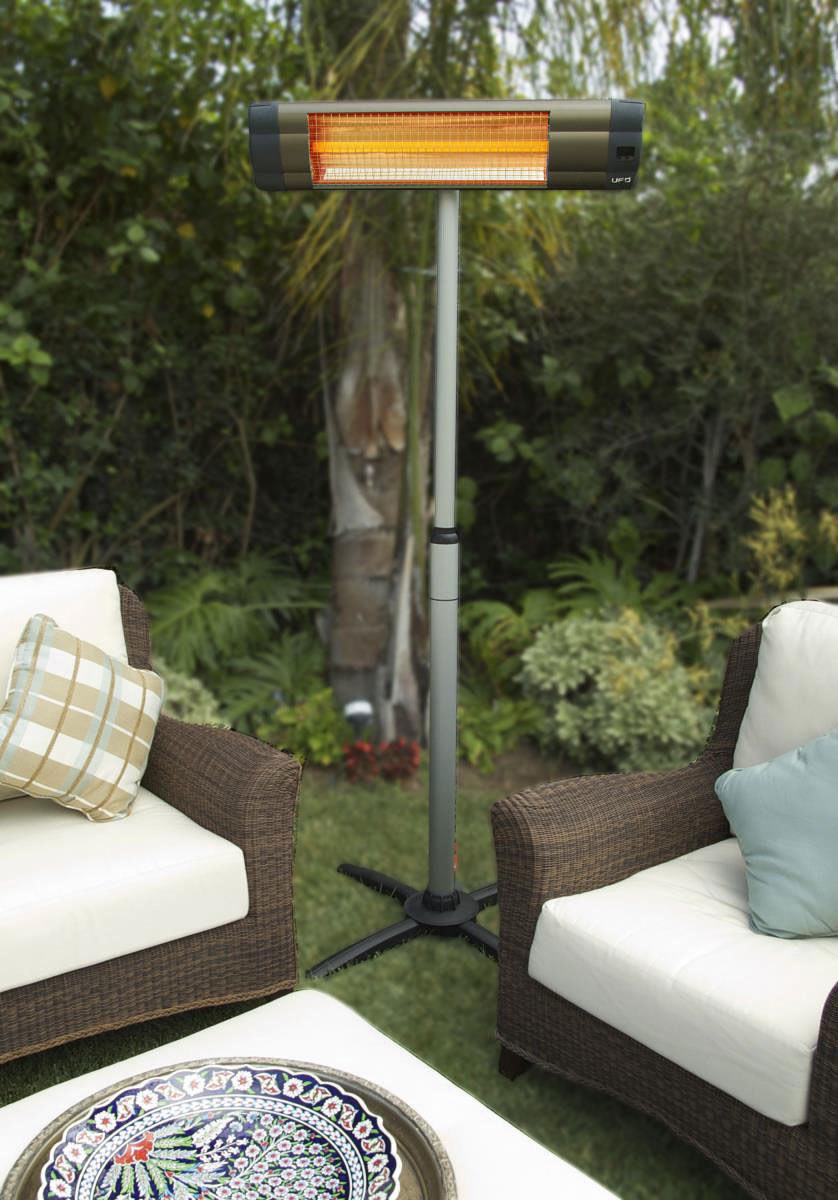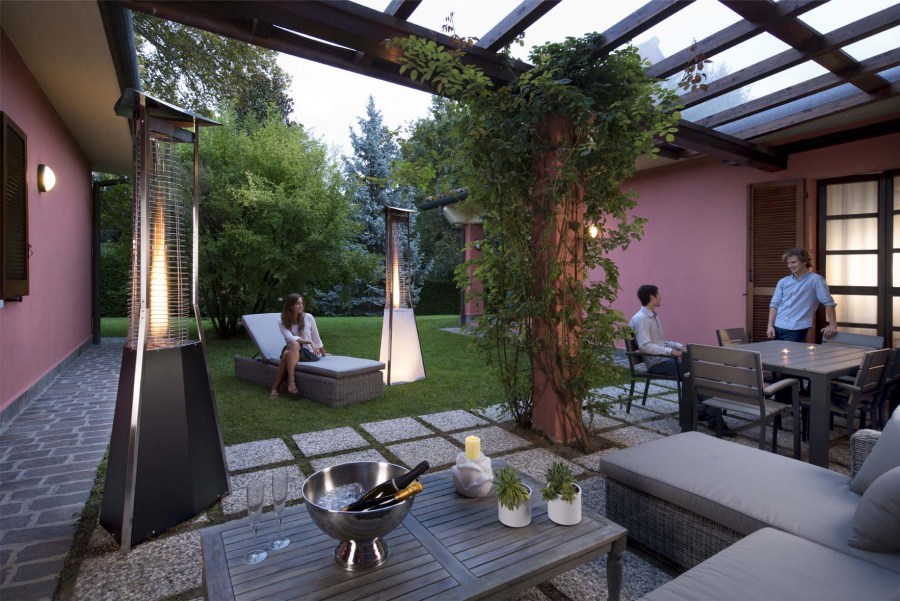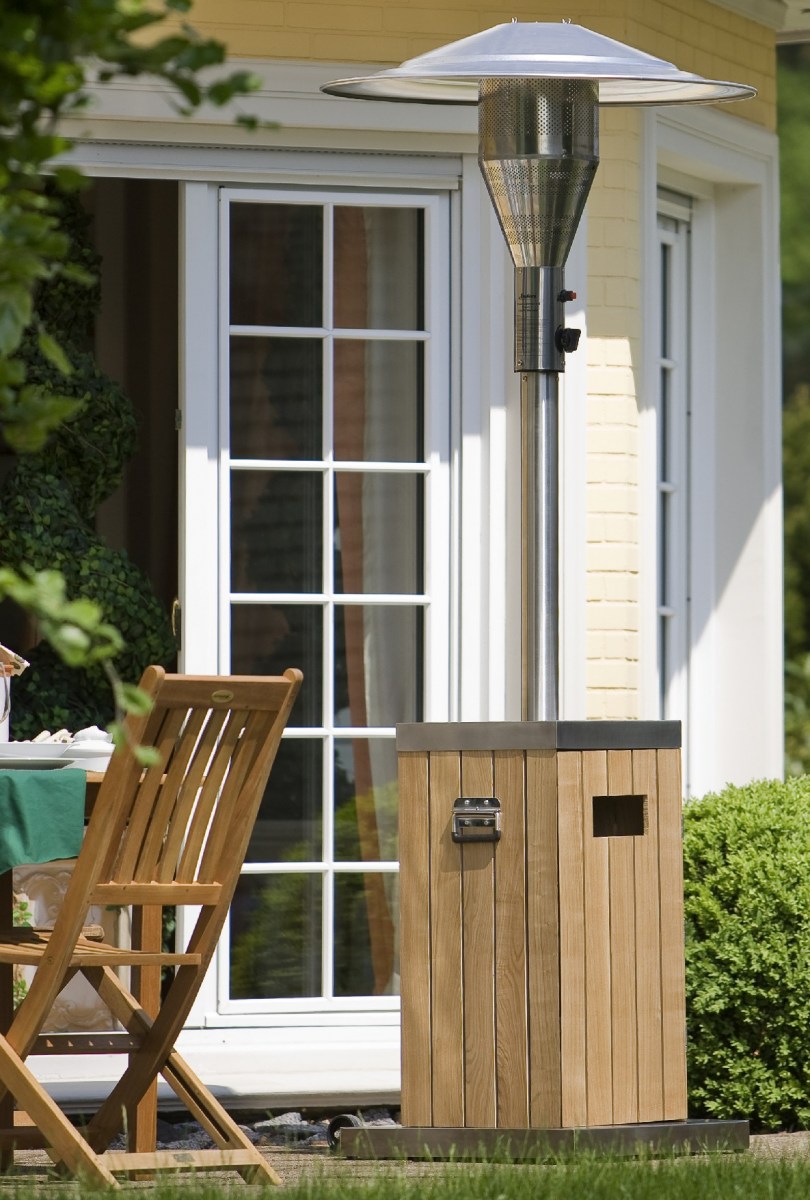Outdoor heater: 115 photos of beautiful ideas for using for summer verandas and summer cottages
With the advent of spring, when nice warm days come, more and more often there is a desire to get into nature. But by evening, the air temperature drops, which makes the rest not comfortable. In such a situation, a street heater will become a real salvation. He will increase the temperature within the radius of his action by 10-15 degrees. The device is placed on the outdoor terraces of cafes and restaurants, barbecue areas.
Advantages of the device were also appreciated by summer residents and owners of private houses. A heater for summer residence prevents the death of immature plants from frost, warms up a greenhouse frozen over the winter, and creates an optimal temperature regime for chicken coops. And installation near stairs or steps reduces the likelihood of icing and the complexity of cleaning.
Types of devices
The market offers many options for outdoor heaters. They all differ in installation location, degree of mobility, wavelength (short-wave, medium-wave and long-wave), power and design.
But the classification is based on the division into the types of street heaters by heat source. The choice of a specific model depends on the area to be heated and on the purchase budget.
Place of installation
Based on where the heater is located, floor, wall and ceiling structures are distinguished. For urban open areas and sports fields, the best choice is outdoor products.
To heat the local area, you can use wall emitters. An interesting variation is heaters mounted in outdoor and garden furniture (benches, tables).
There are stationary and portable options. The latter are equipped with rollers for ease of movement of the mechanism. Below are photos of all types of street heaters.
Heat source
The most widely used gas and electrical products.
Gas heater
The gas heater consists of a housing, gas lines and a burner. For a stable position, eliminating tipping over, the body is massive and durable. The material is stainless steel or ordinary steel with a protective polymer coating.
At the base of the case is a gas cylinder with liquefied propane or butane. Through special pipes and pipes, gas rushes up to the burner. When burning, it produces infrared radiation that heats objects, but not air masses. Ignition of the burner is carried out using piezoelectric elements.
The most popular form is a floor lamp heater. It is a stand, covered with a conical cap. Such a “lampshade” is made from a material with a high degree of reflection of light and heat waves. Its purpose is to evenly distribute the received heat.
Often purchased heaters in the form of a truncated pyramid. An aluminum reflector is installed at the top, which works like a heater-floor lamp cap.
Inside the frame of refractory, tempered glass, a flame burns. Thanks to the design, not only heating is provided, but also the aesthetics of the burning fire.
Advantages of gas species:
- appearance successfully fits into any interior;
- simplicity of construction;
- compactness, do not require specially preparing the site for placement;
- autonomy and electrical independence;
- during operation they do not emit noise and do not emit hazardous products of combustion into the air.
Gas models are more economical than their electrical counterparts.According to equipment manufacturers, about 92% of the total energy generated is spent on heating items, the rest is in the air.
Disadvantages of gas species:
- relatively low efficiency;
- infrared rays heat the human skin, dry it;
- long-wave models are quite expensive;
- the range of recommended temperatures for operating the heater is limited to +10 degrees. and higher;
- it is undesirable to use indoors;
- you should monitor the availability of cylinders and replenish their stock on time.
The priority in the operation of gas appliances should be safety. It is ensured by the implementation of a number of rules:
- Before turning on the gas heater, it is necessary to conduct a visual inspection of the rubber hoses for defects.
- It is better to store the cylinders in a separate room that is not connected with the house.
- Do not use gas cylinders near open flames.
- If you plan a long absence, you should close the valves on the tanks with gas.
- Compliance with these requirements is a guarantee of safe and long-term operation of the equipment.
Electric heater
Electric heater is the main competitor of gas models. It contains a metal frame, a reflective reflector and auxiliary parts (enclosing gratings, safety elements). IR radiation is generated by quartz, carbon tubes or halogen lamps.
Positive aspects of the purchase of an infrared electric heater:
- less weight, since there is no gas cylinder;
- quick warm up;
- safety subject to proper installation;
- operate at lower temperatures than gas heaters.
The negative side is only one - requires connection to the mains.
On sale you can find heaters that operate on solid fuels. These are stoves simple in design, without complex electronics and gas components.
Despite the attractive price of the heater itself, the cost of combustible consumables after several years of use will far exceed the cost of a gas or electric outdoor appliance.
Tips for choosing outdoor heaters
Experts have developed several recommendations that will help to understand which heater to choose in each case:
Power. Depends on what dimensions need to be heated. To improve the microclimate of 1 sq.m. at 20 degrees., a source of 0.75-1 kW will be required. If the task is to heat the situation at 10 degrees, then the required power is 0.5 kW.
The average radius of action of the heater is 2.5 m. By calculating the dimensions of the heating zone (using the circle area formula), you can determine the required power of the installation.
Body material. Models made of stainless steel are suitable for outdoor use without protective awnings. They are not afraid of precipitation and corrosion.
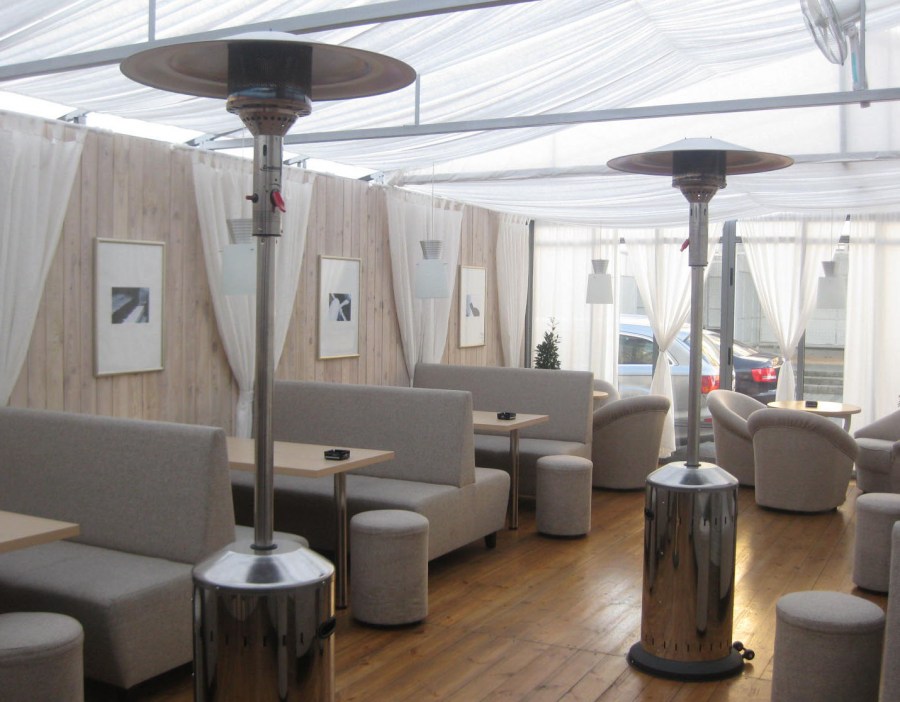 If the steel heater is not made in stainless, it is better to install it under the hinged visors or purchase an additional accessory - a cover from the sun and rain.
If the steel heater is not made in stainless, it is better to install it under the hinged visors or purchase an additional accessory - a cover from the sun and rain.
Auto Protection Mechanisms.Today, even budget models are equipped with automatic shutdown devices in emergency situations. Usually, they stop the gas supply to the burner when the flame is extinguished. More advanced heaters turn off when the operating position deviates from the vertical (in the event of a fall hazard).
Type of gas. Heaters consume 2 types of gas: propane or butane. If the cottage or the equipped space is used only in the summer months, then butane is the best solution.
Propane is used in the fall or spring season with an unstable temperature gradient. Ideally, if the heater will run on both types of fuel.
Installation of heaters
The question of how to install a heater is visited by each of its owners. The general rule is that heaters must not be installed near flammable items.
Installation of floor structures is not difficult. It is enough to choose a flat base for placing the device. Somewhat more complicated with the rest of the constructive varieties.
Wall-mounted models are positioned at a height of at least 1.8 m. The distance from the top edge of the device to the ceiling or roof is at least 0.25 m. You will need a screwdriver, a set of mounting brackets (usually come with the product) and hardware . Ceiling heaters are hung on hooks screwed into the ceiling.
Photo of a street heater
Motion sensor to turn on the light - 115 photos and selection recommendations
Plate on the house - 100 photos of the best options and beautiful design
Drainage on the site: 115 photos and the procedure for the implementation of the system
Treehouse: ideas and implementation of the best projects for children (105 photos)
Join the discussion:
